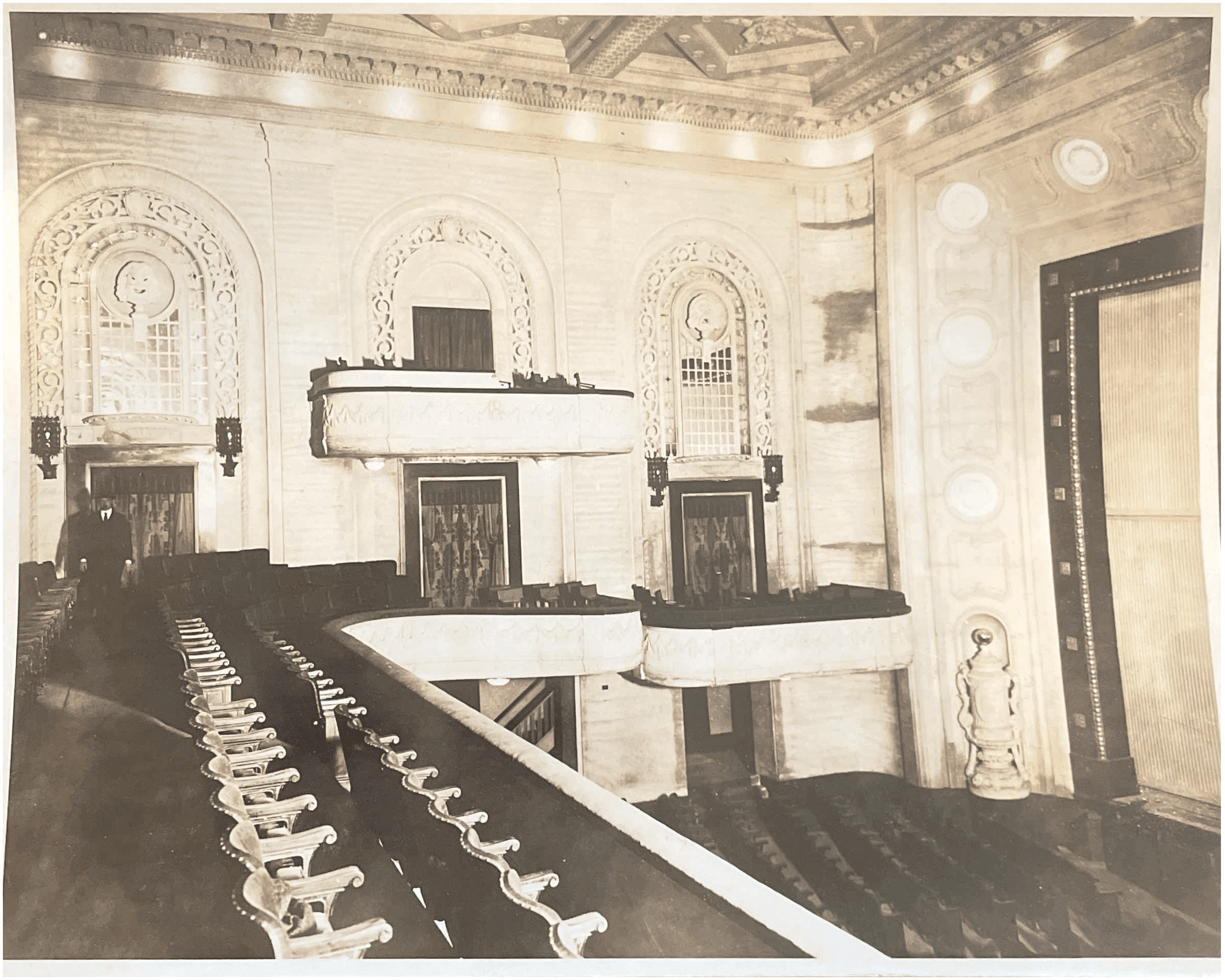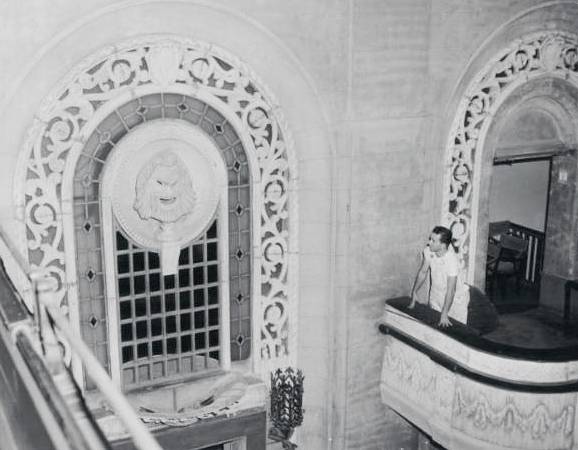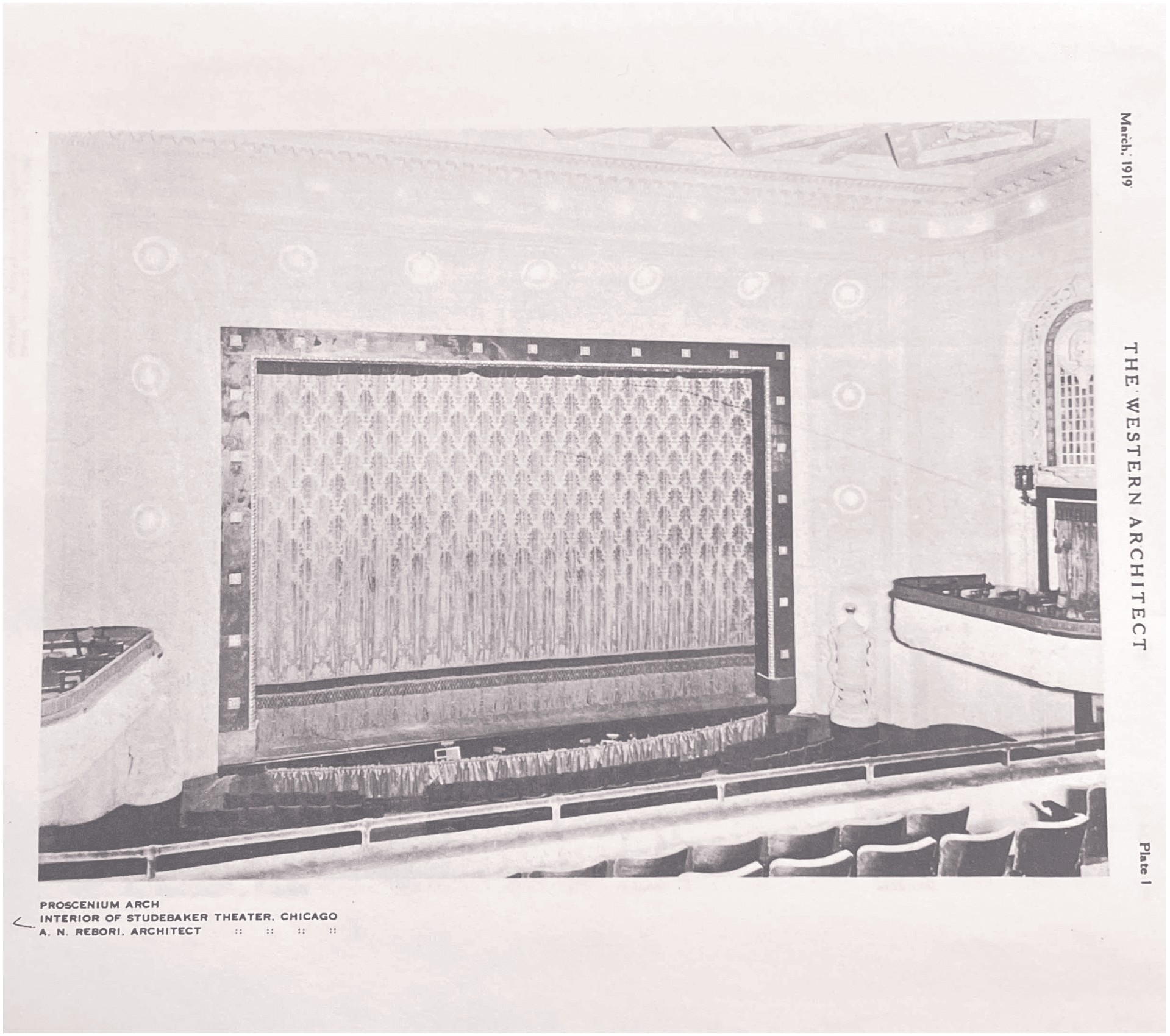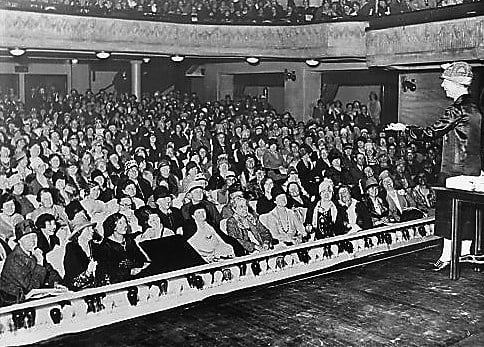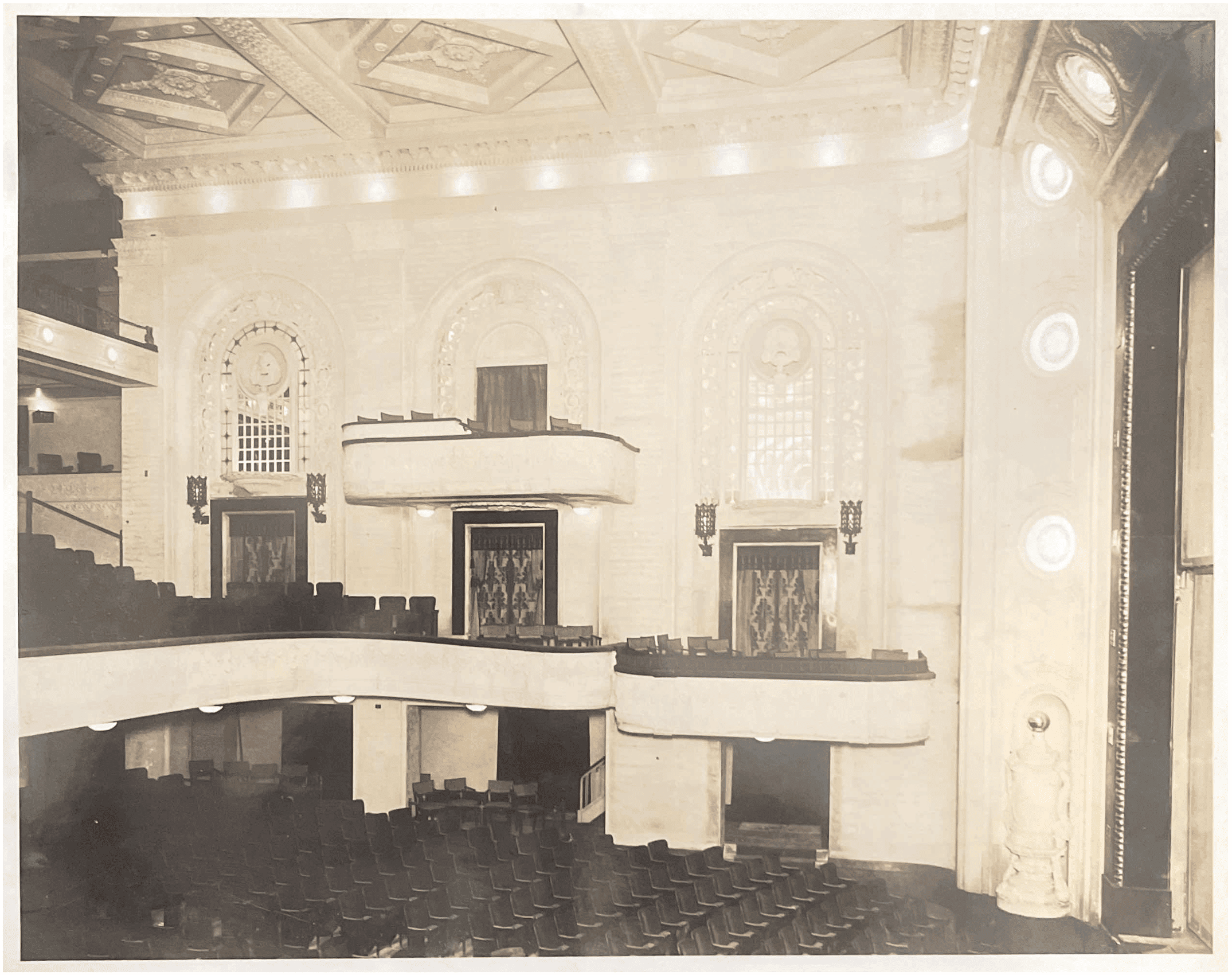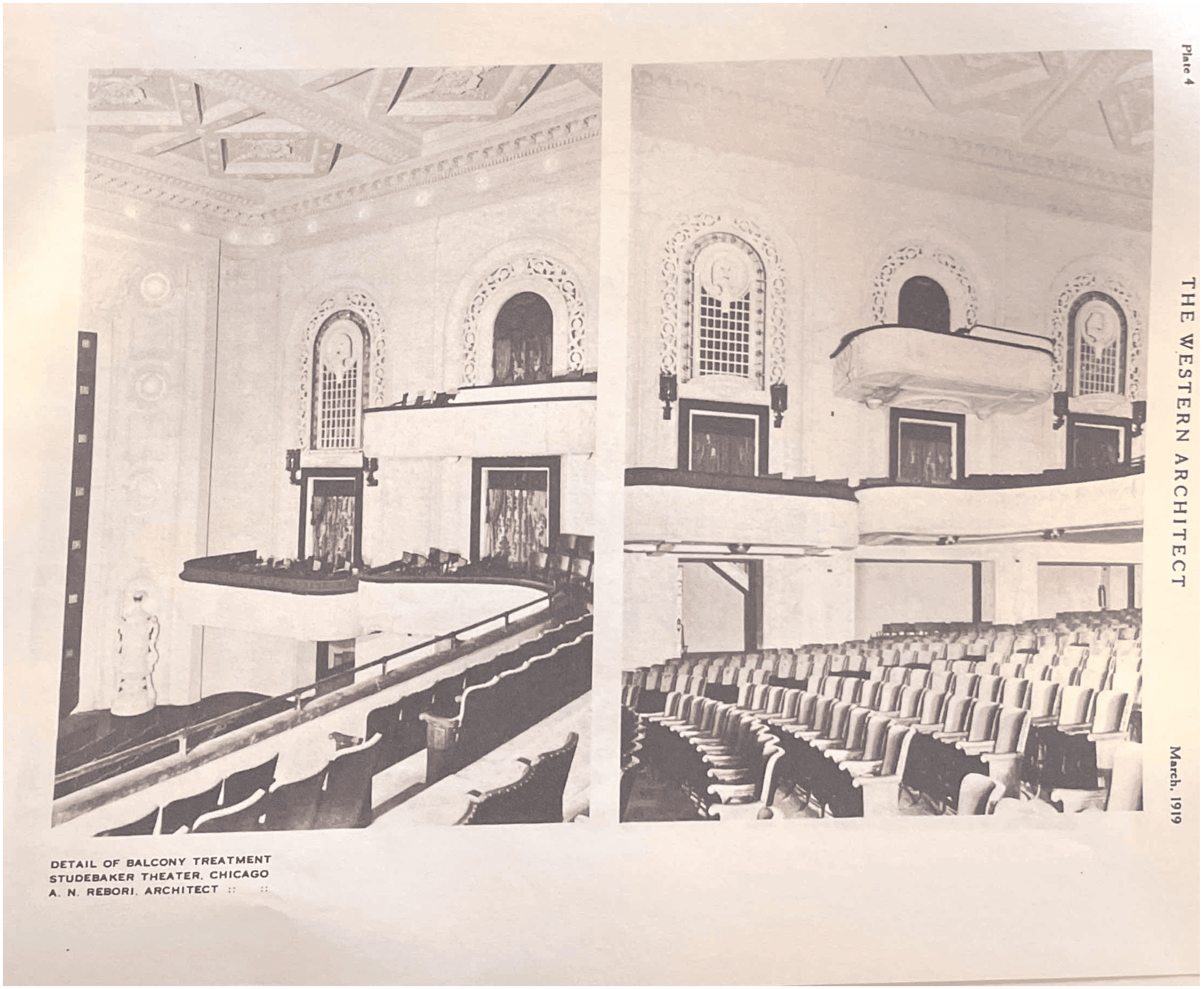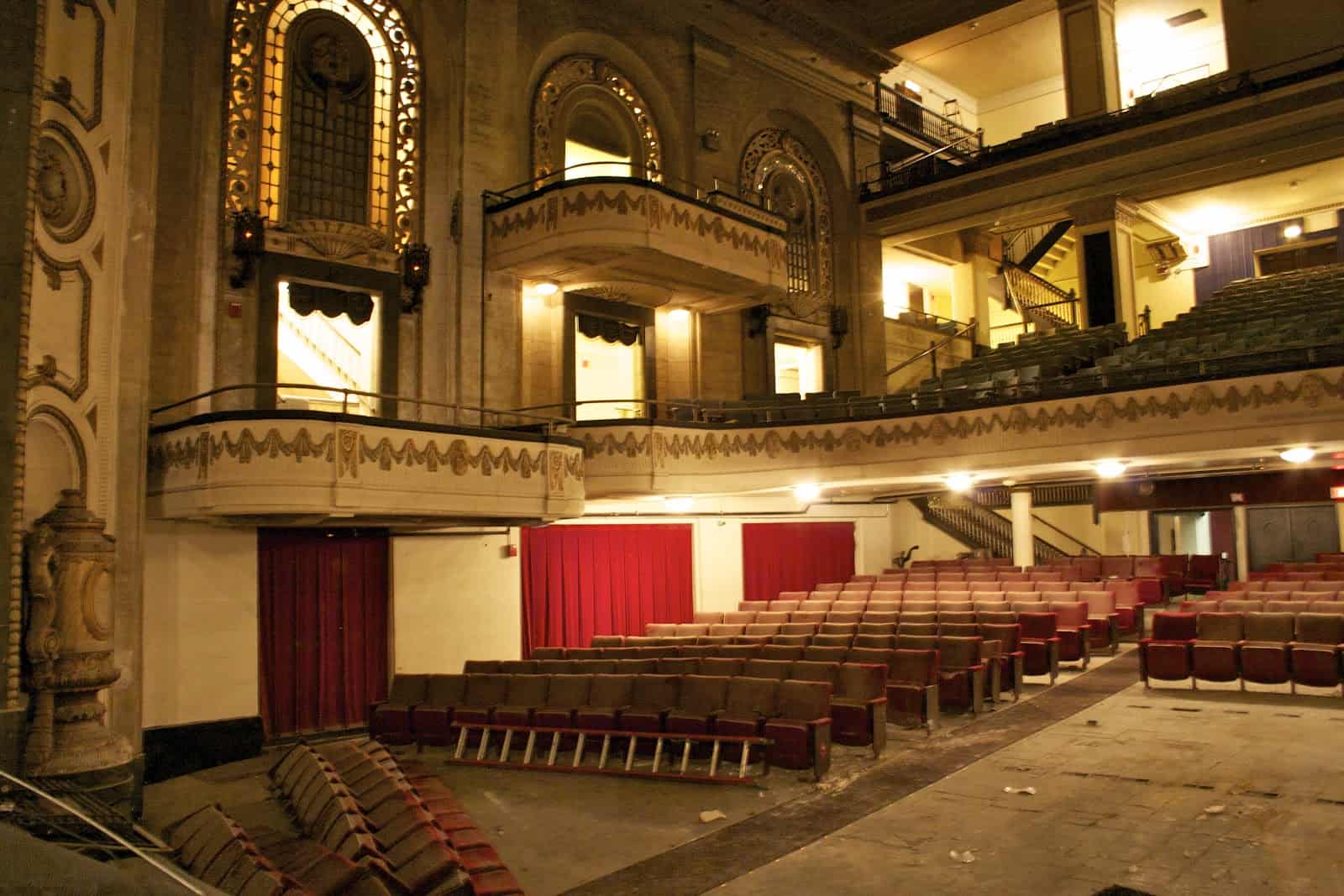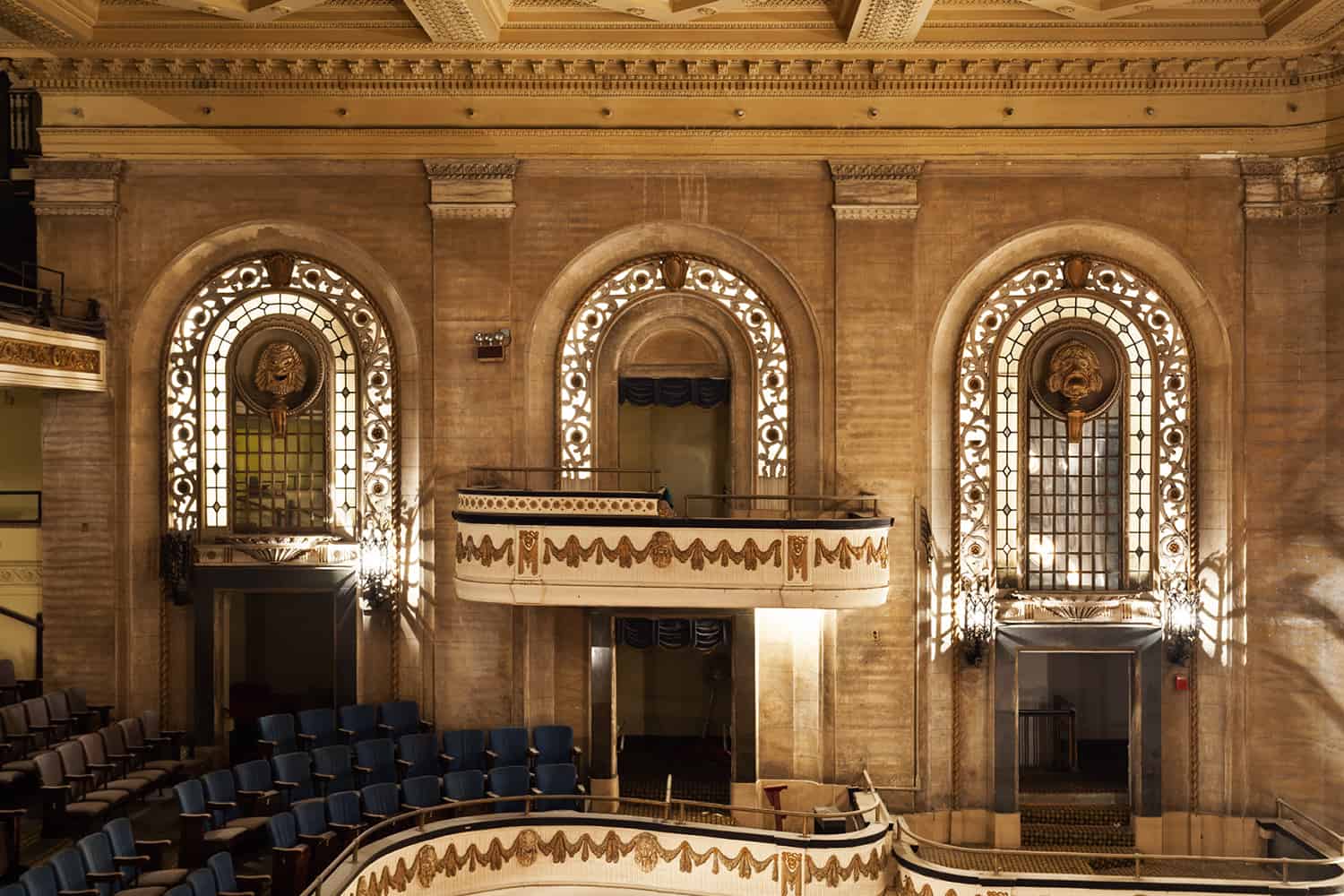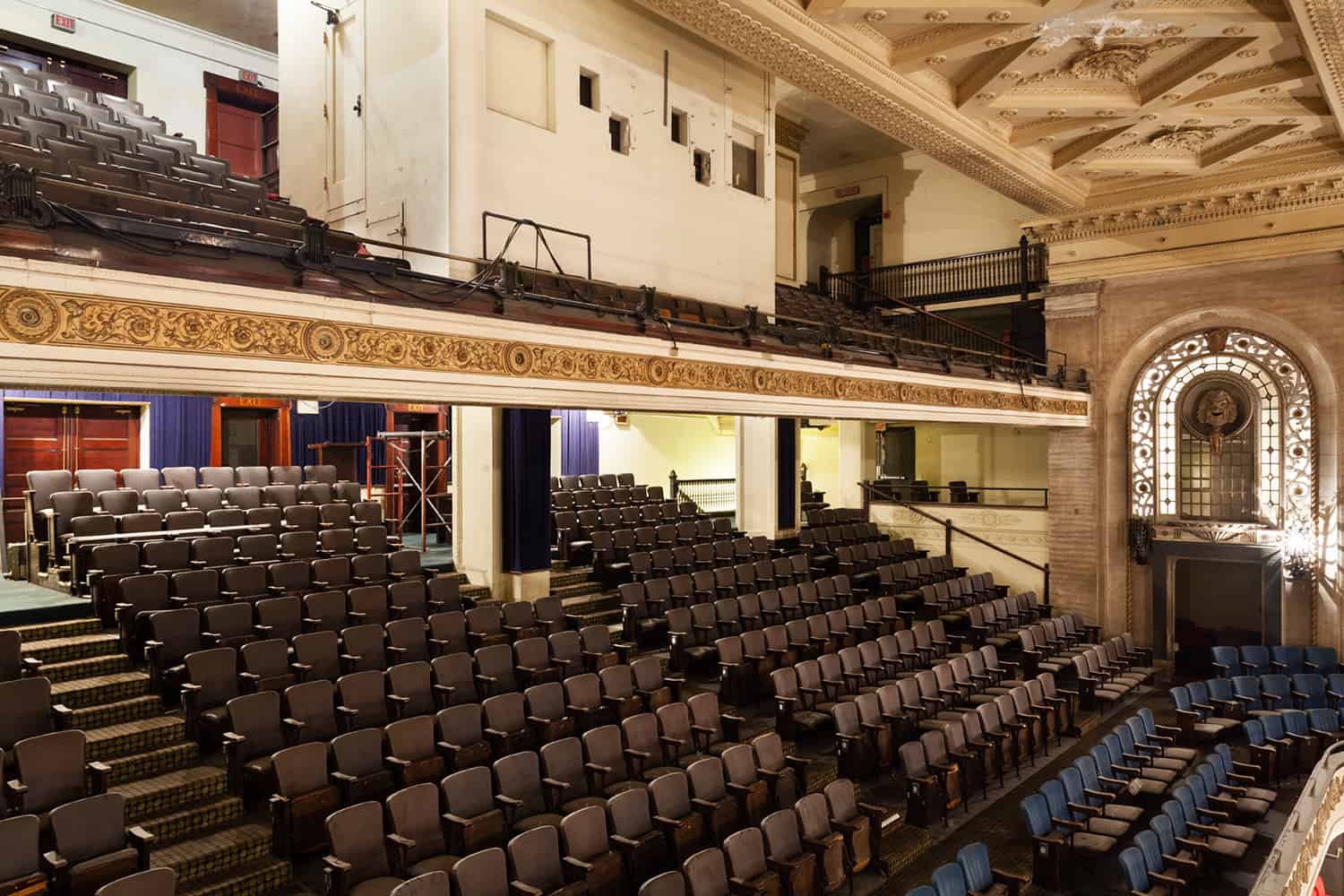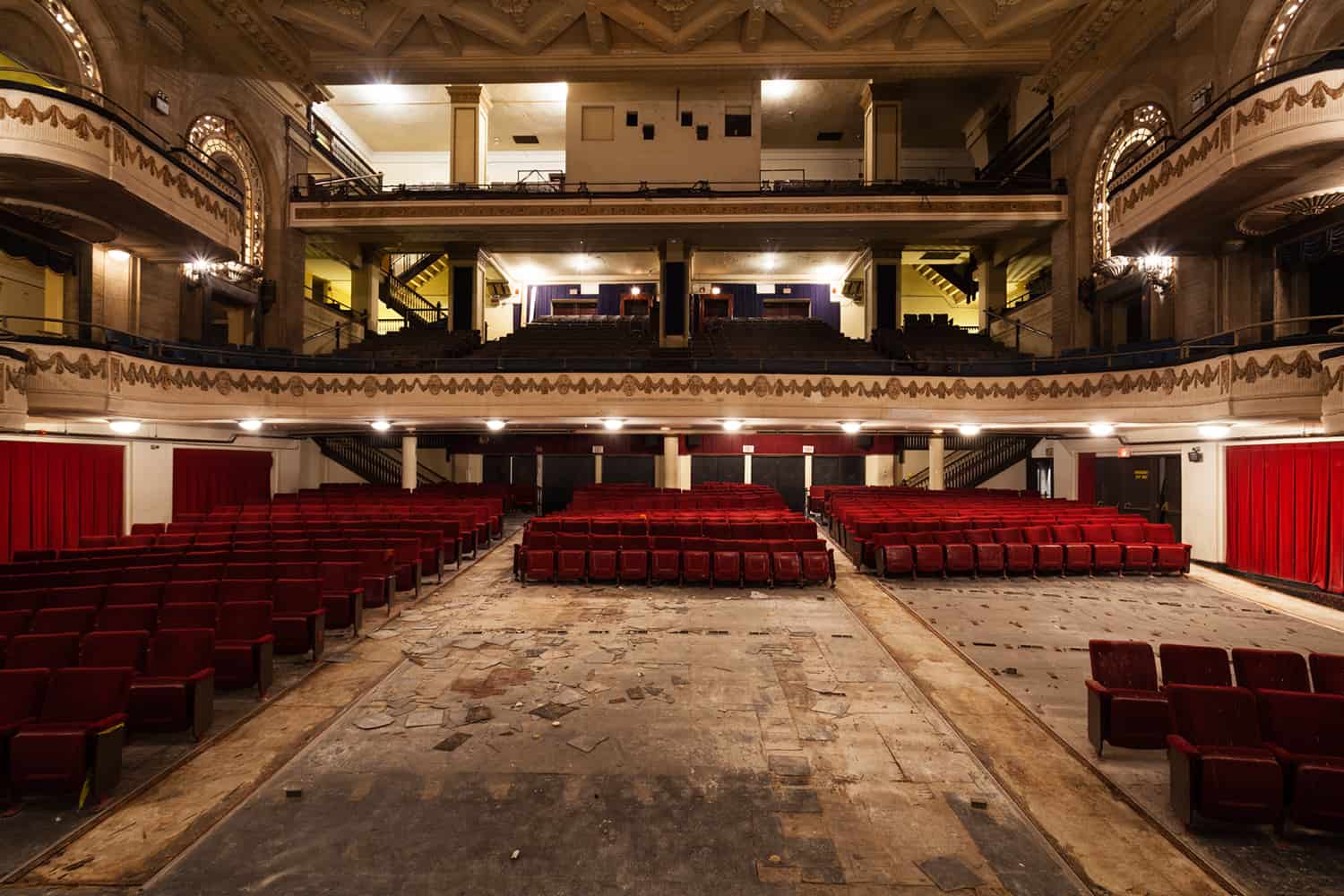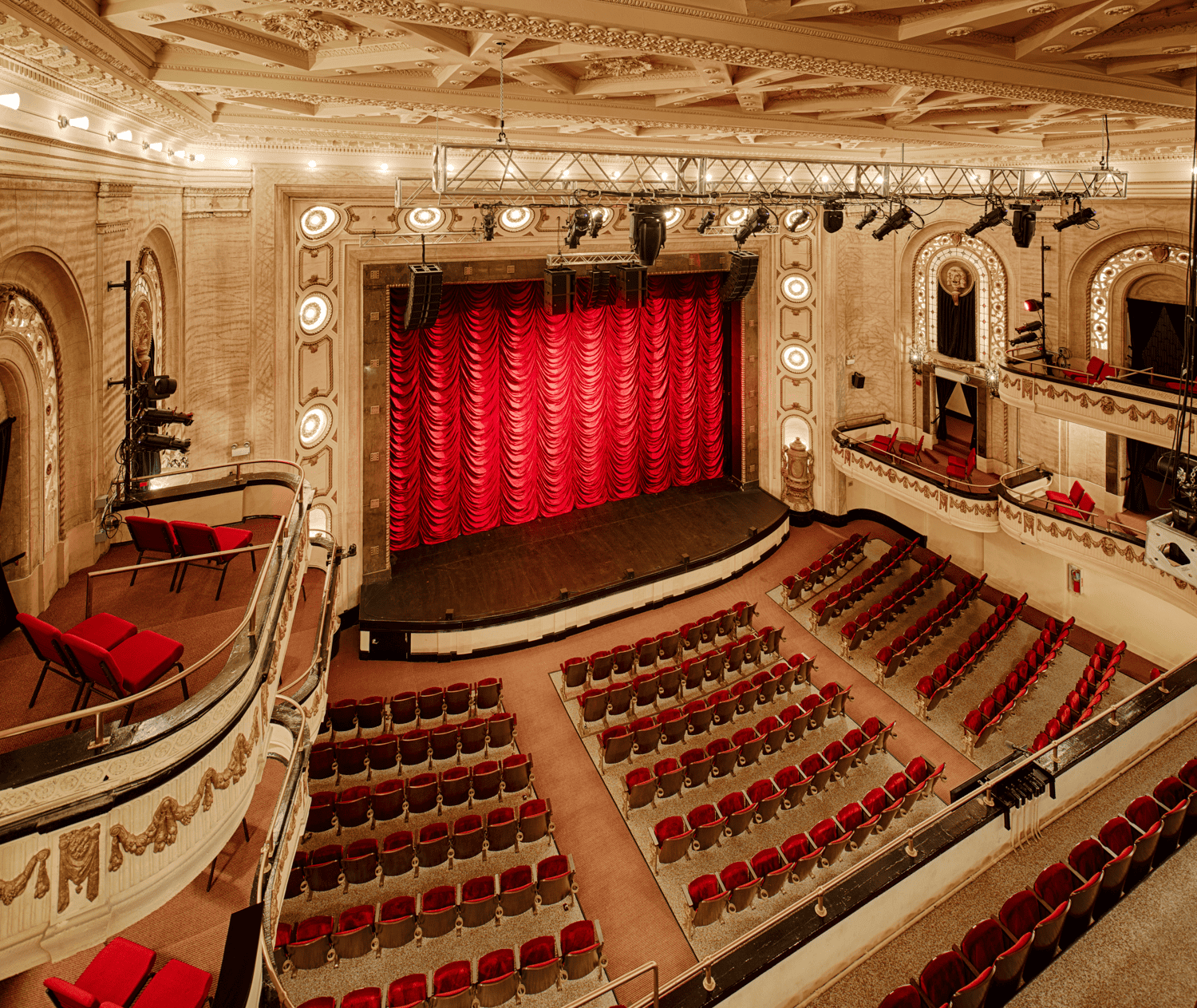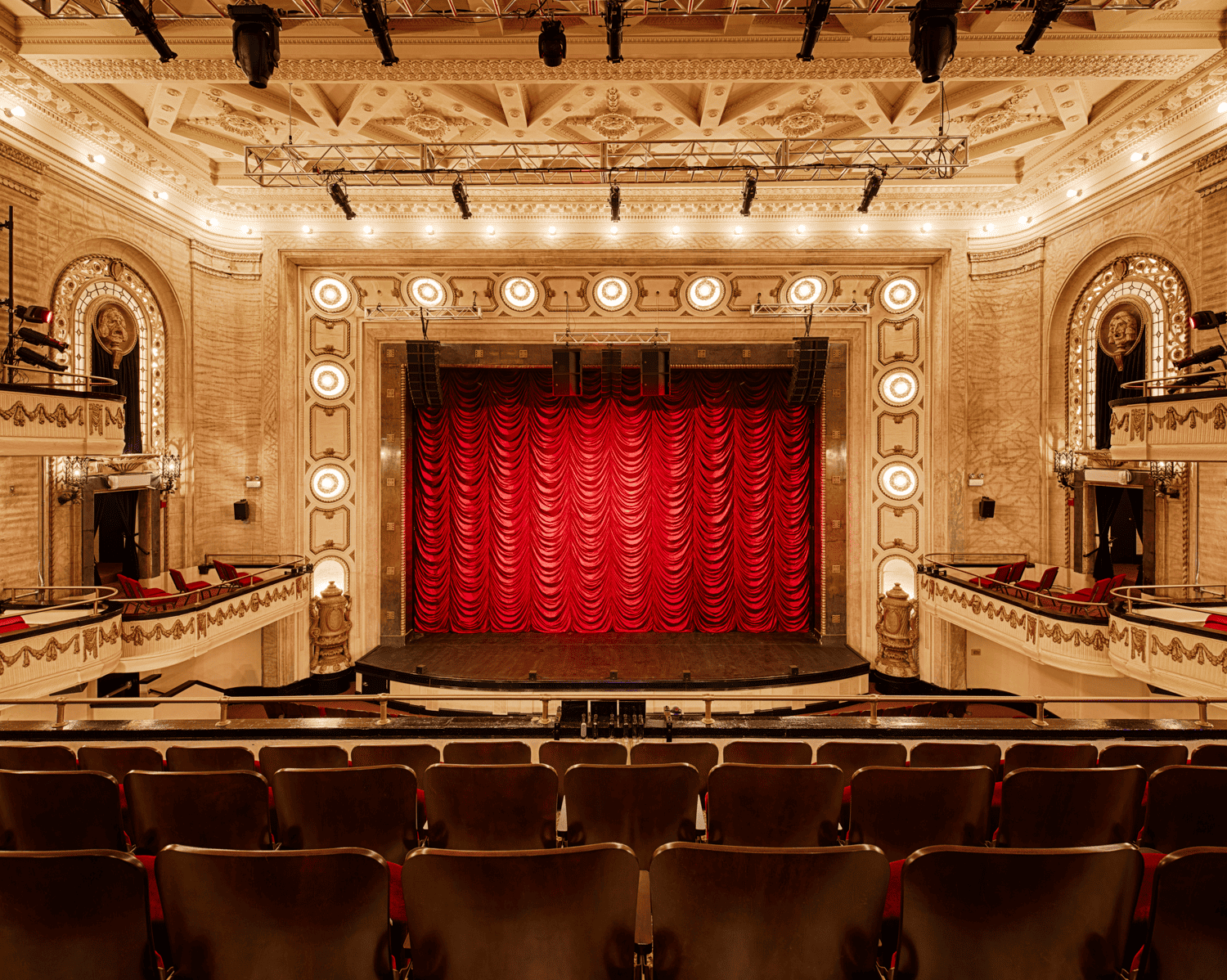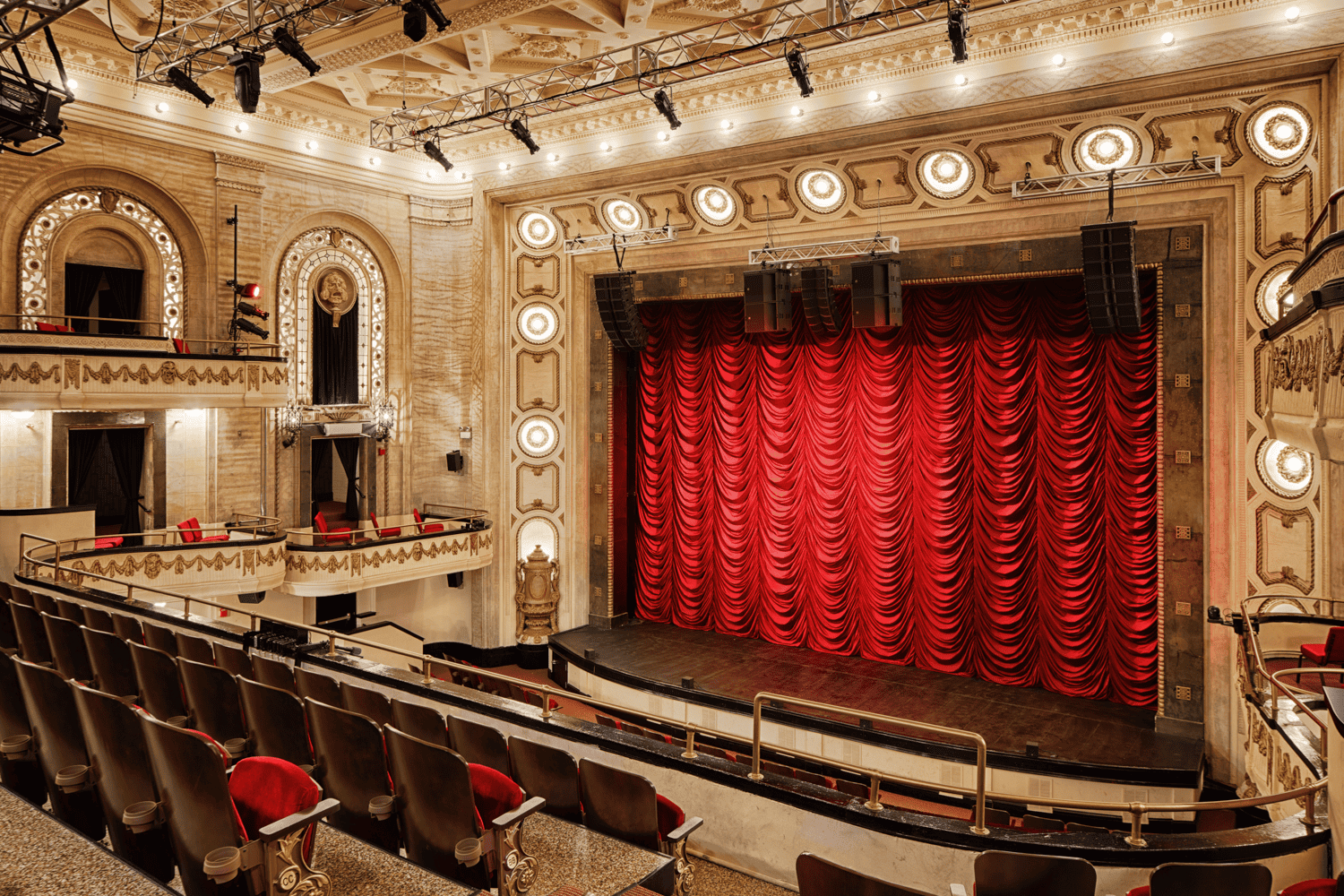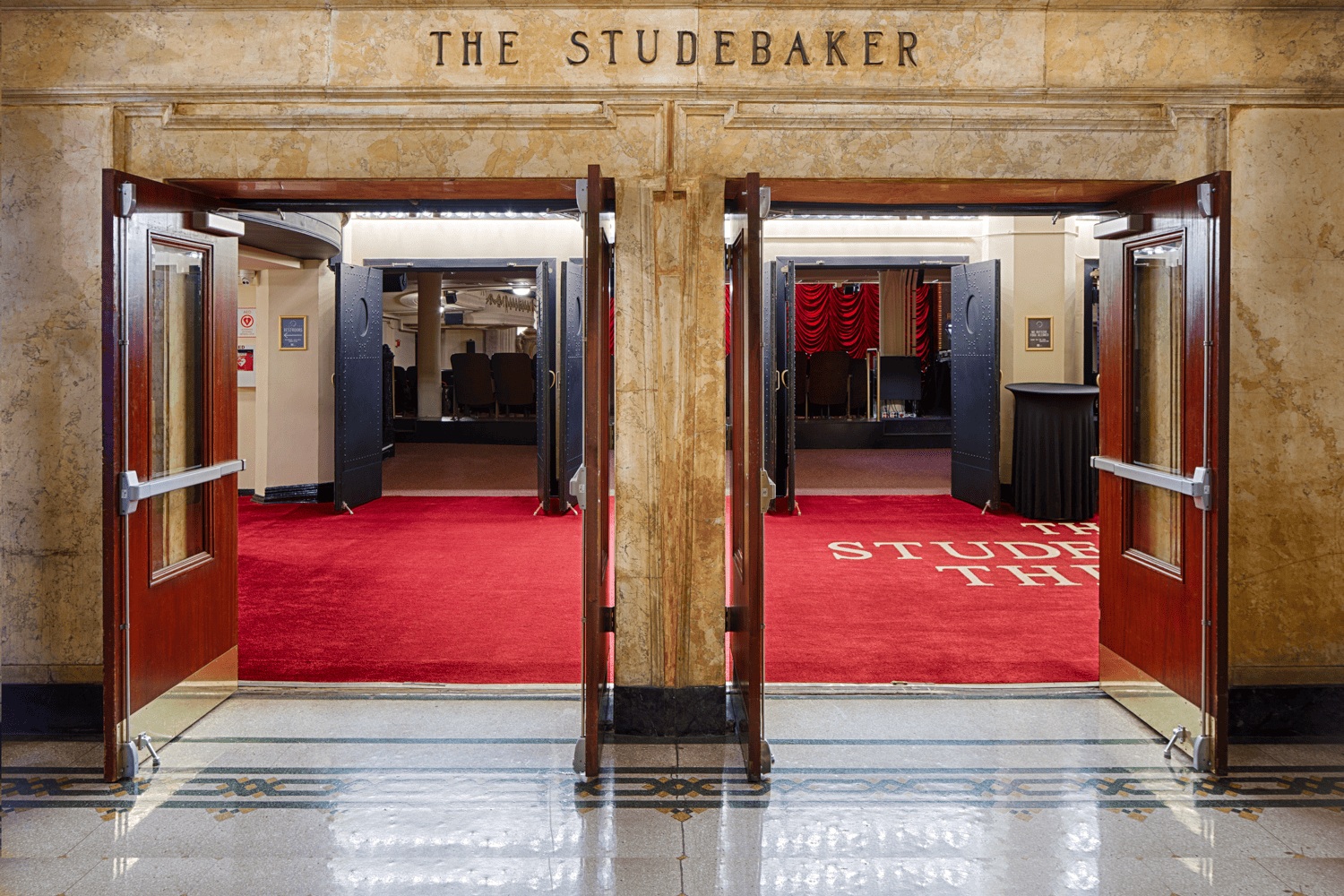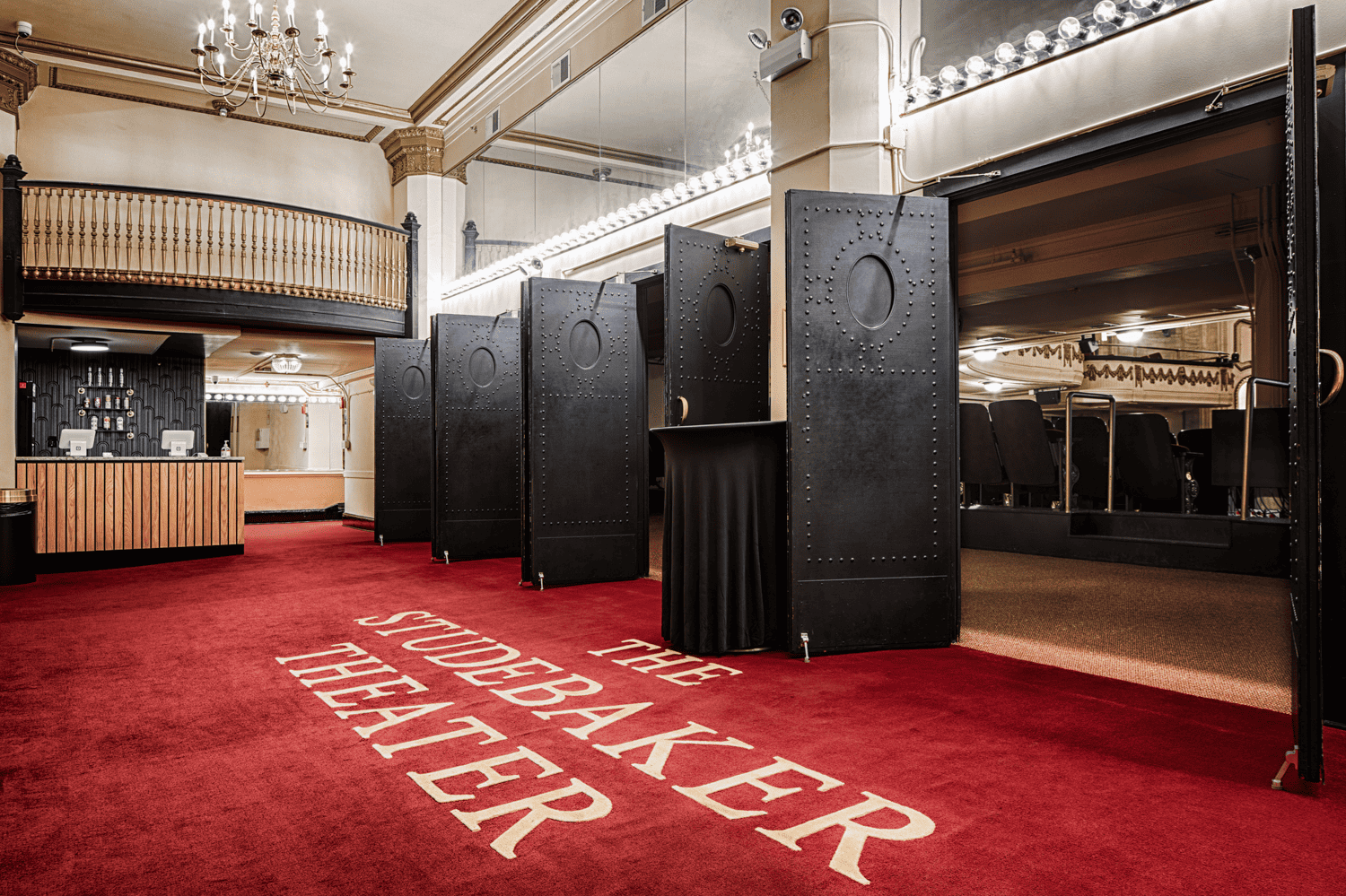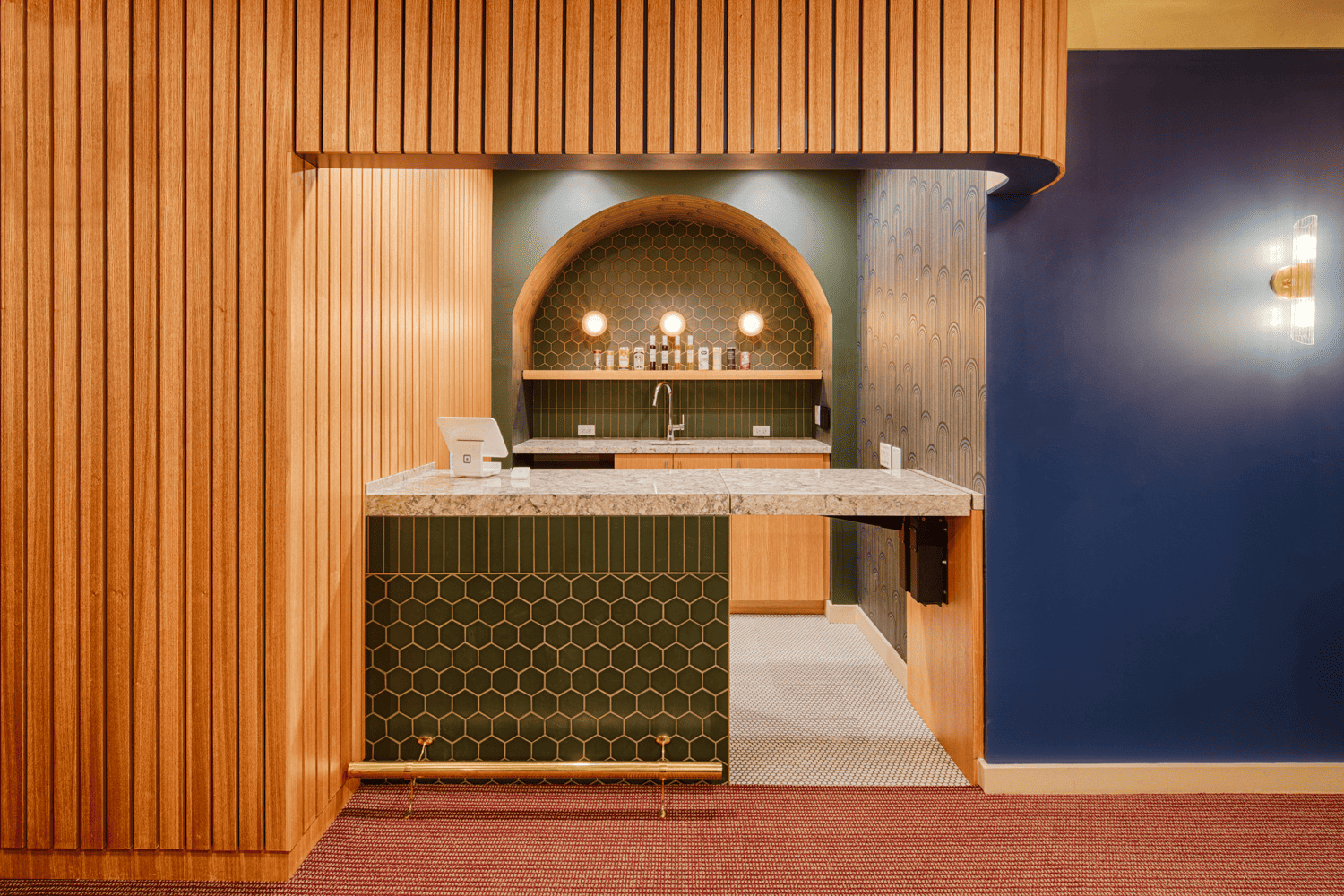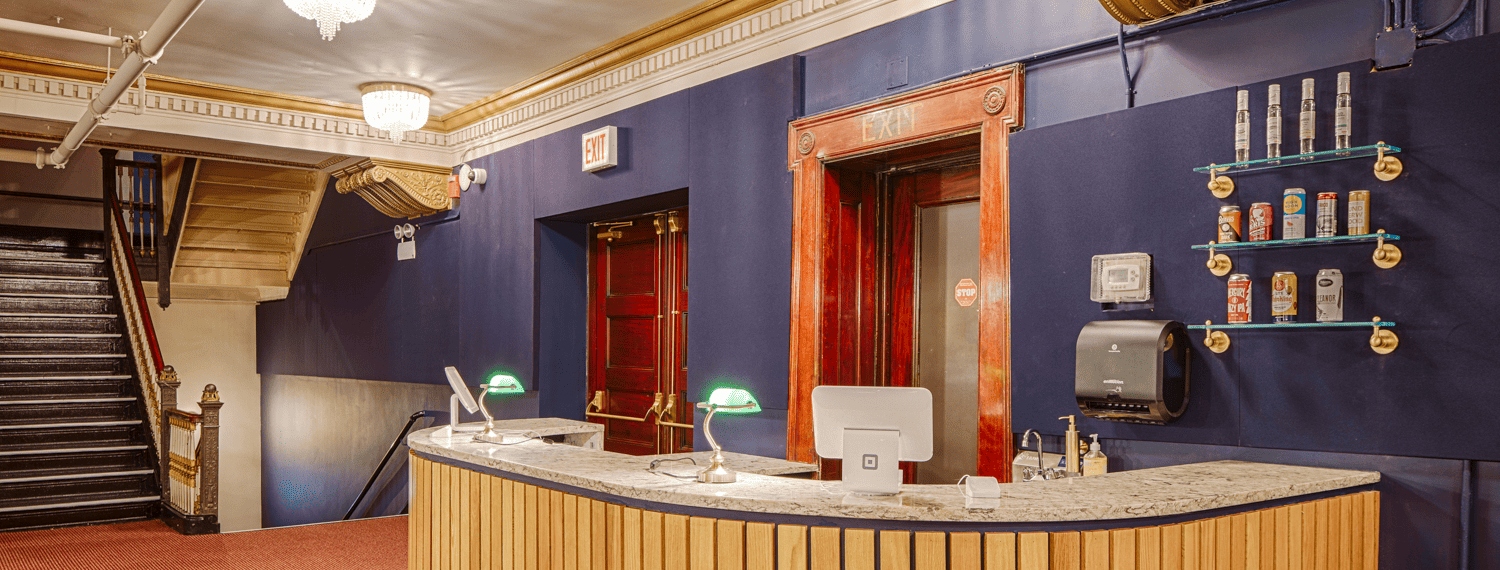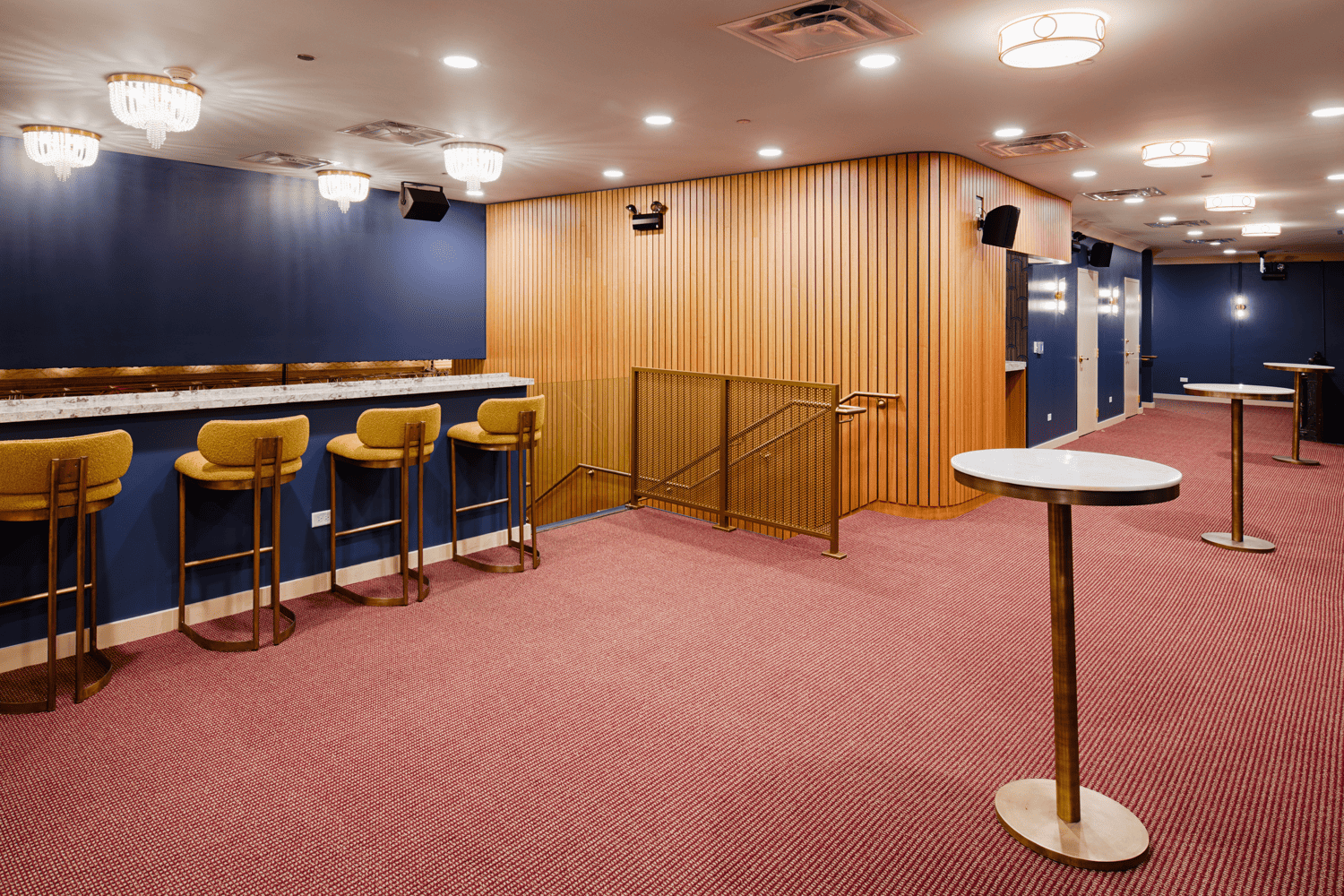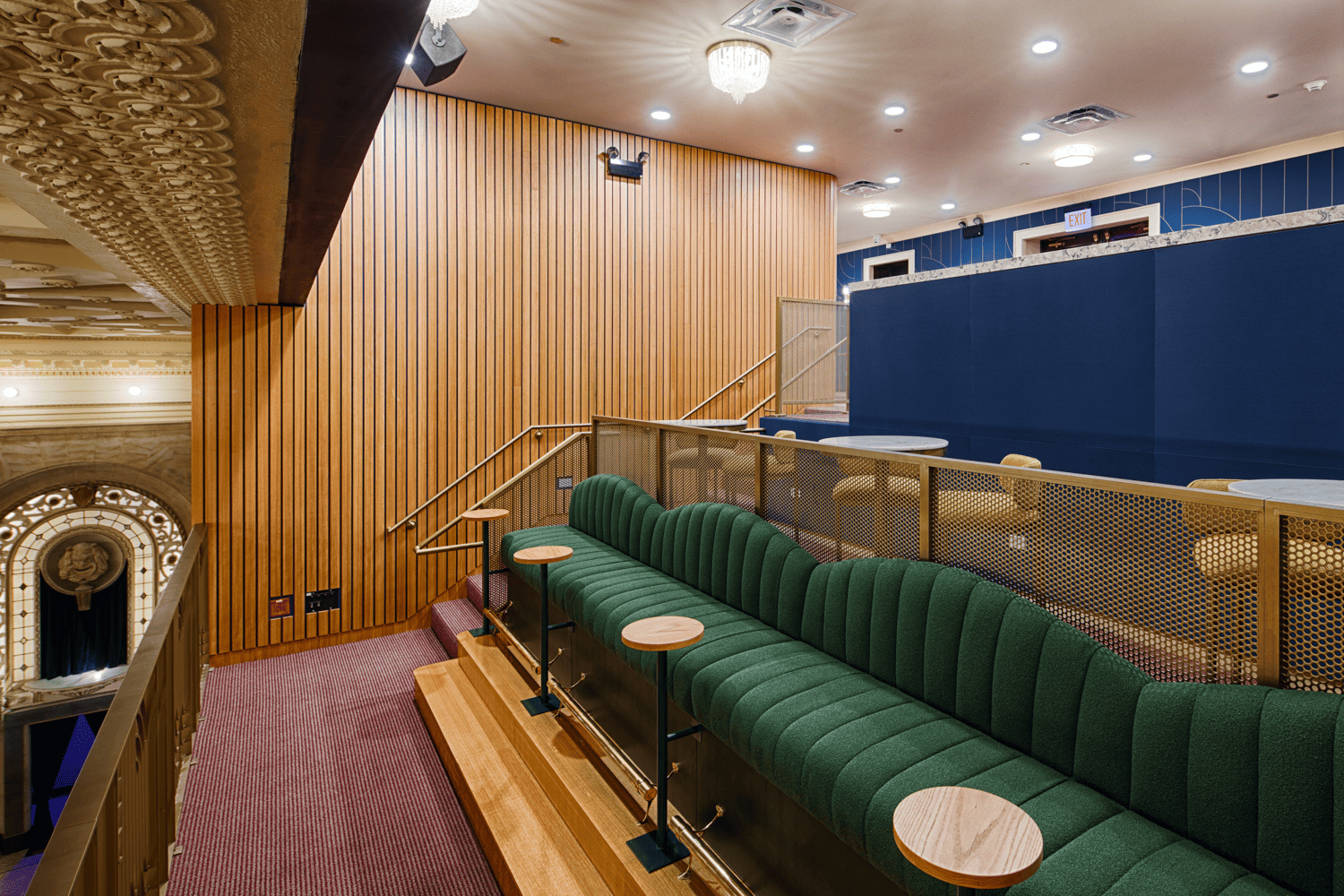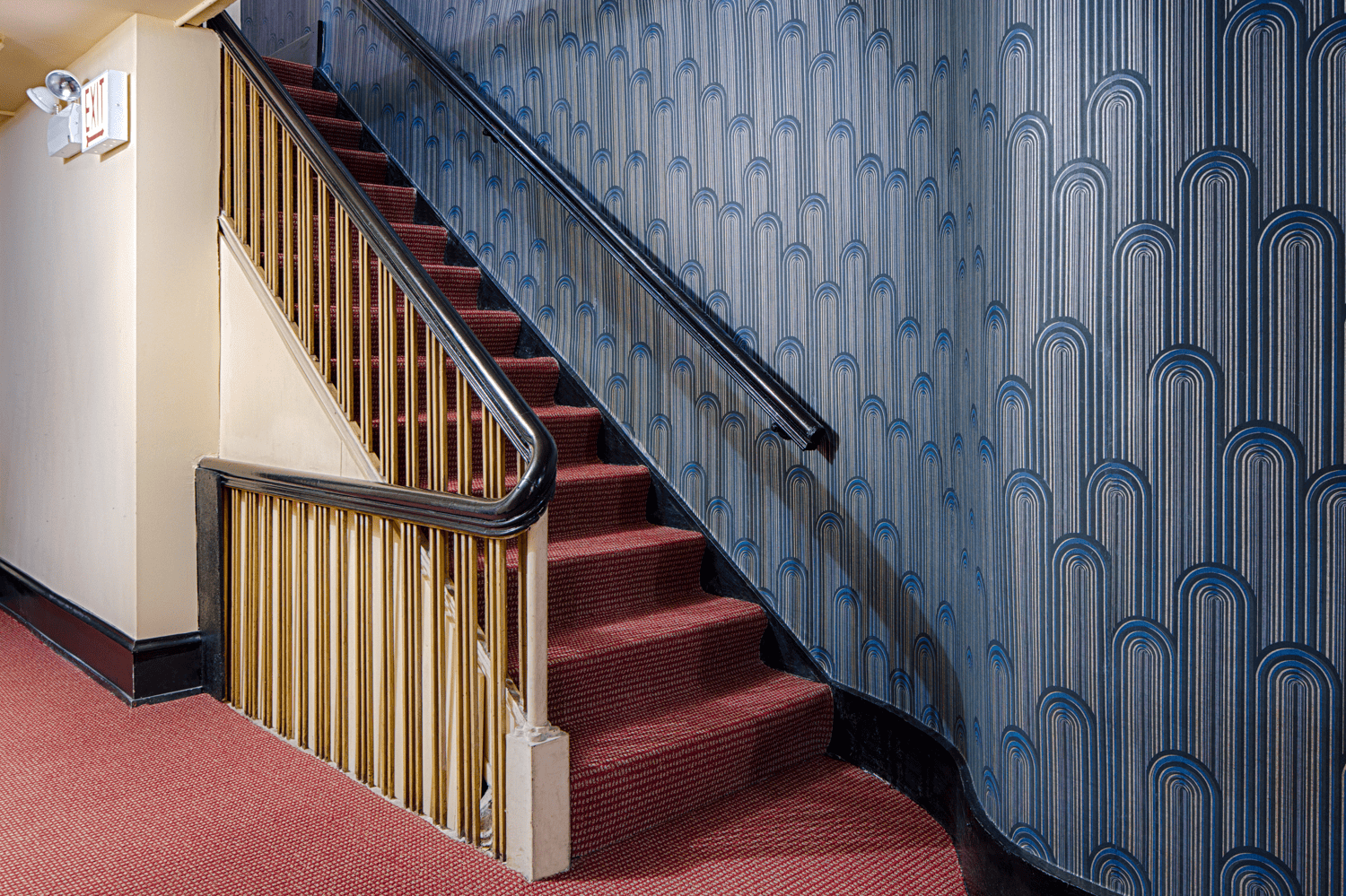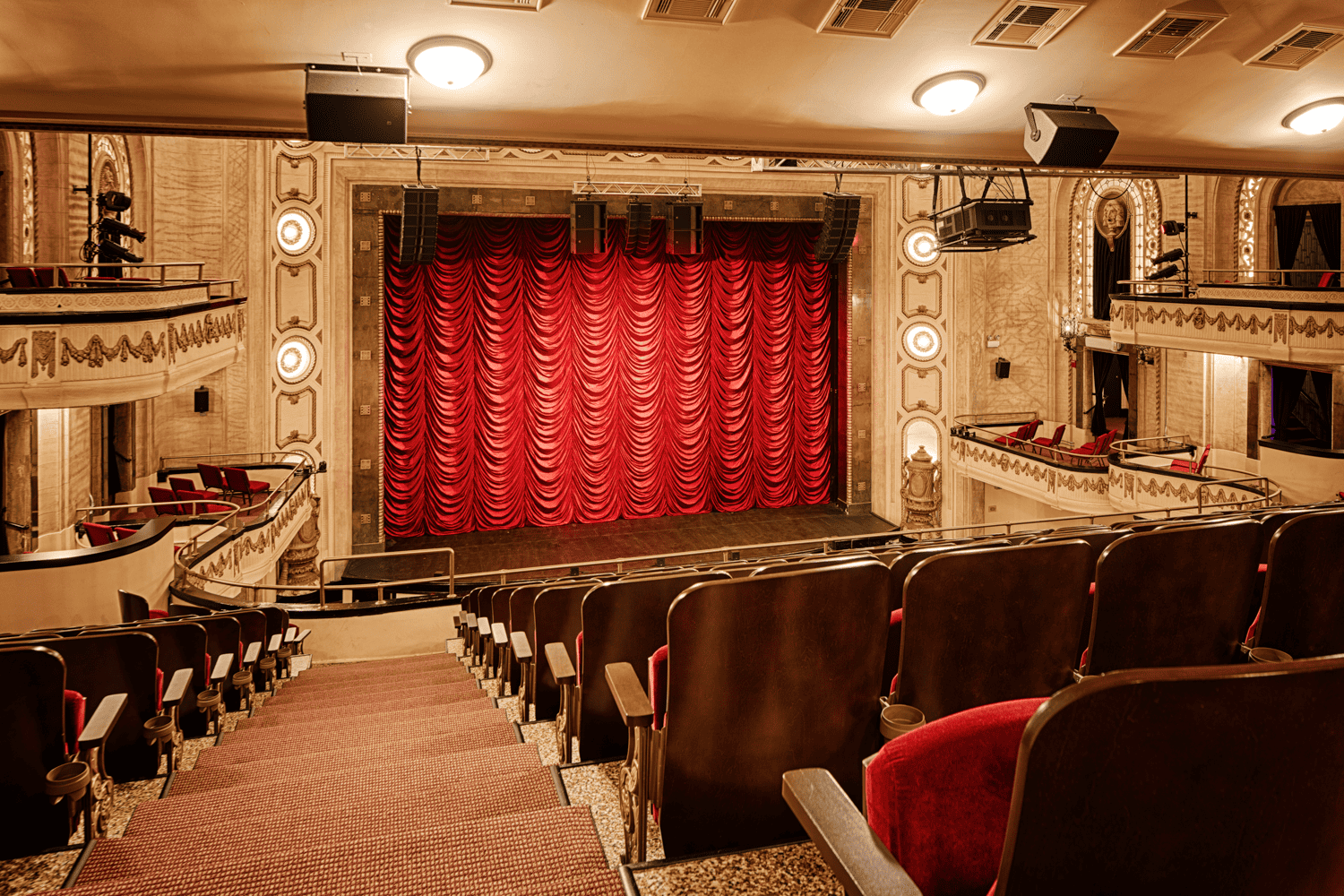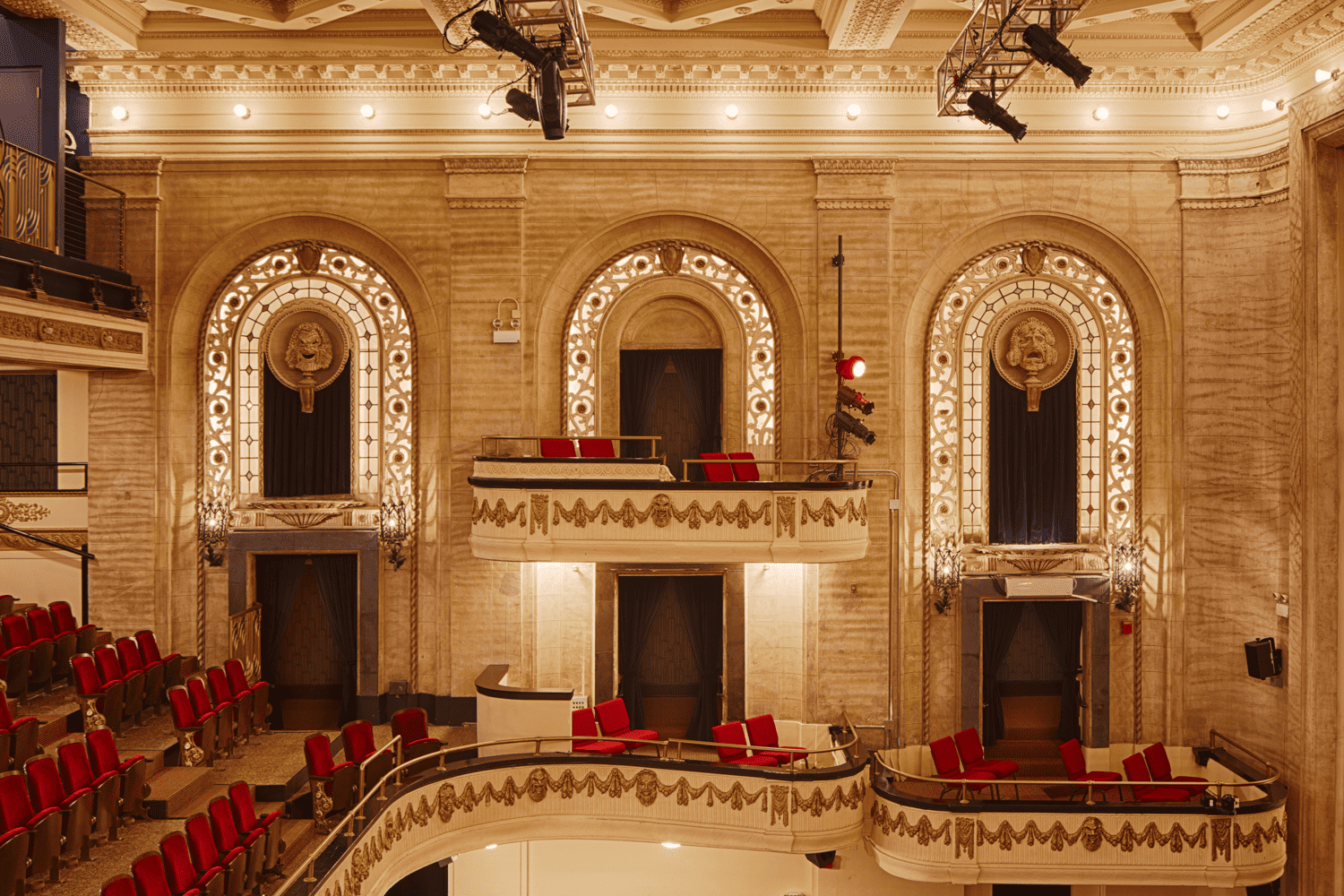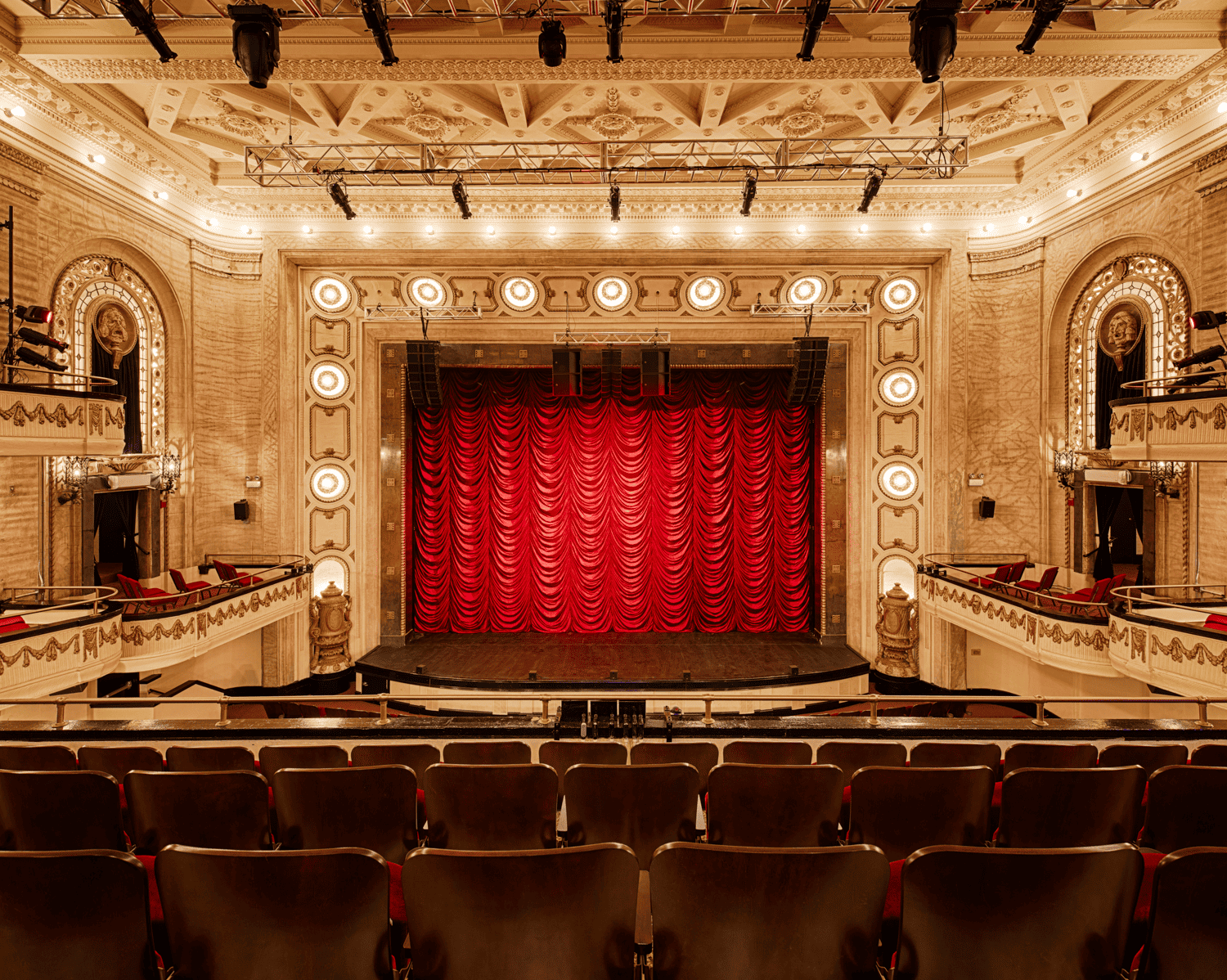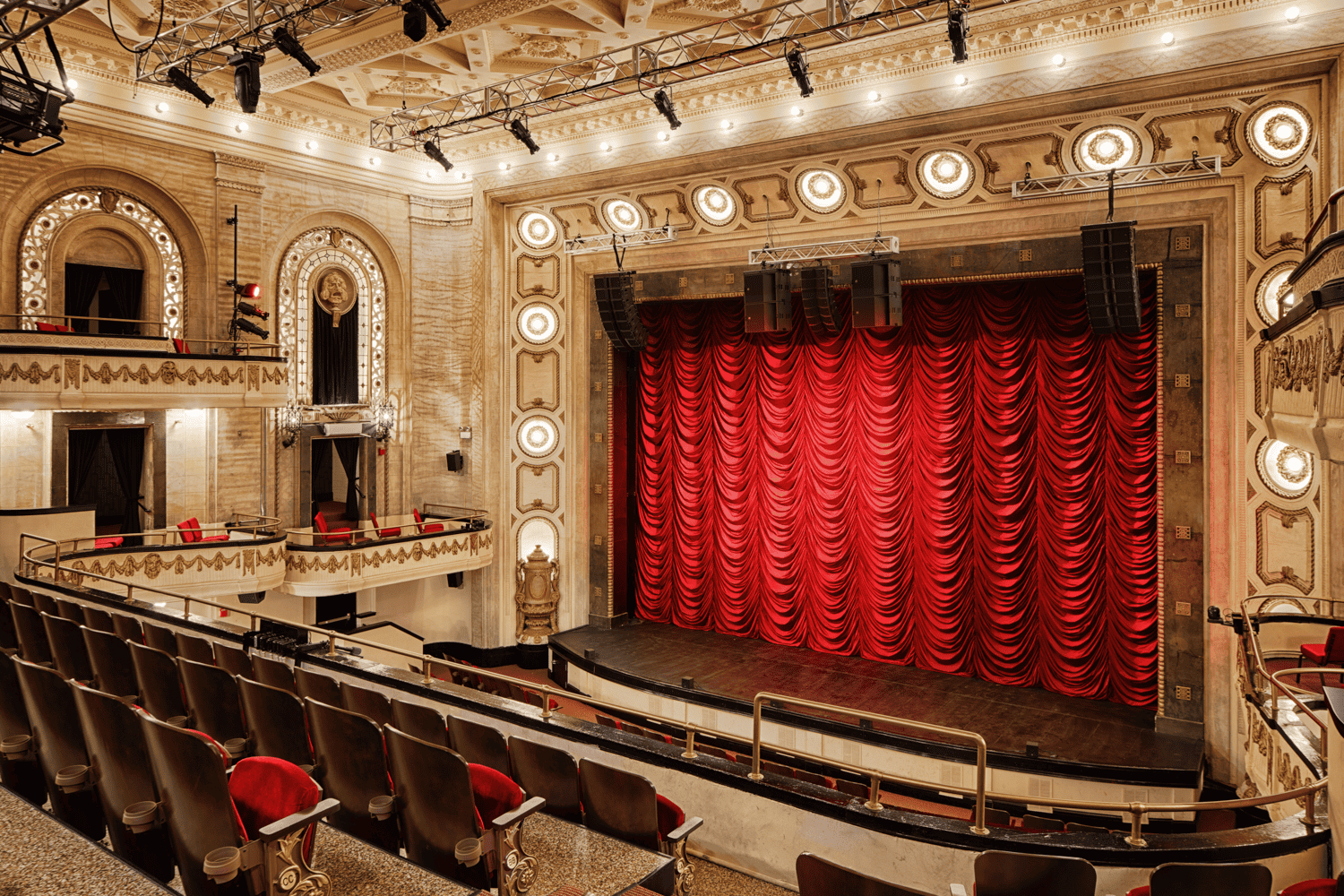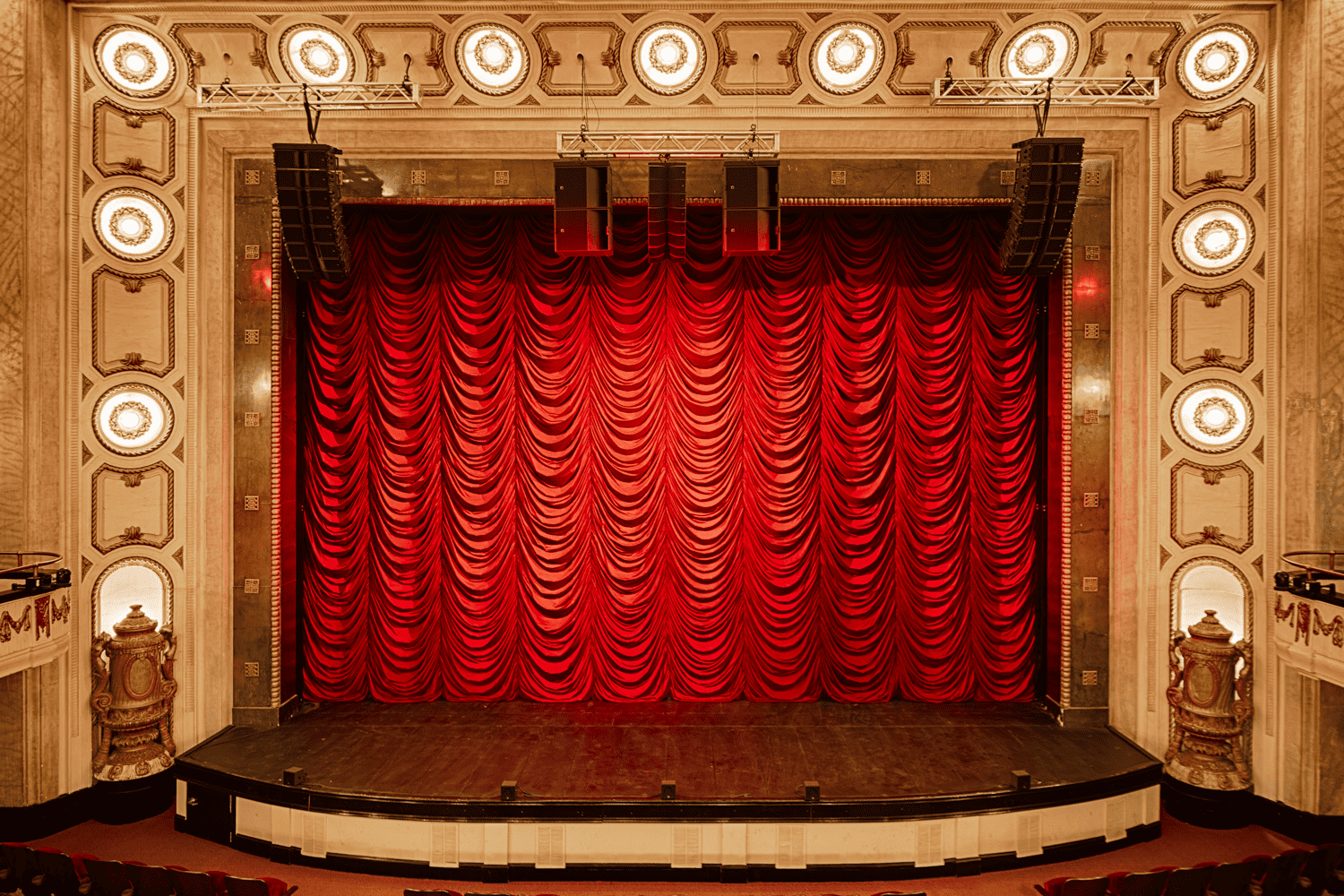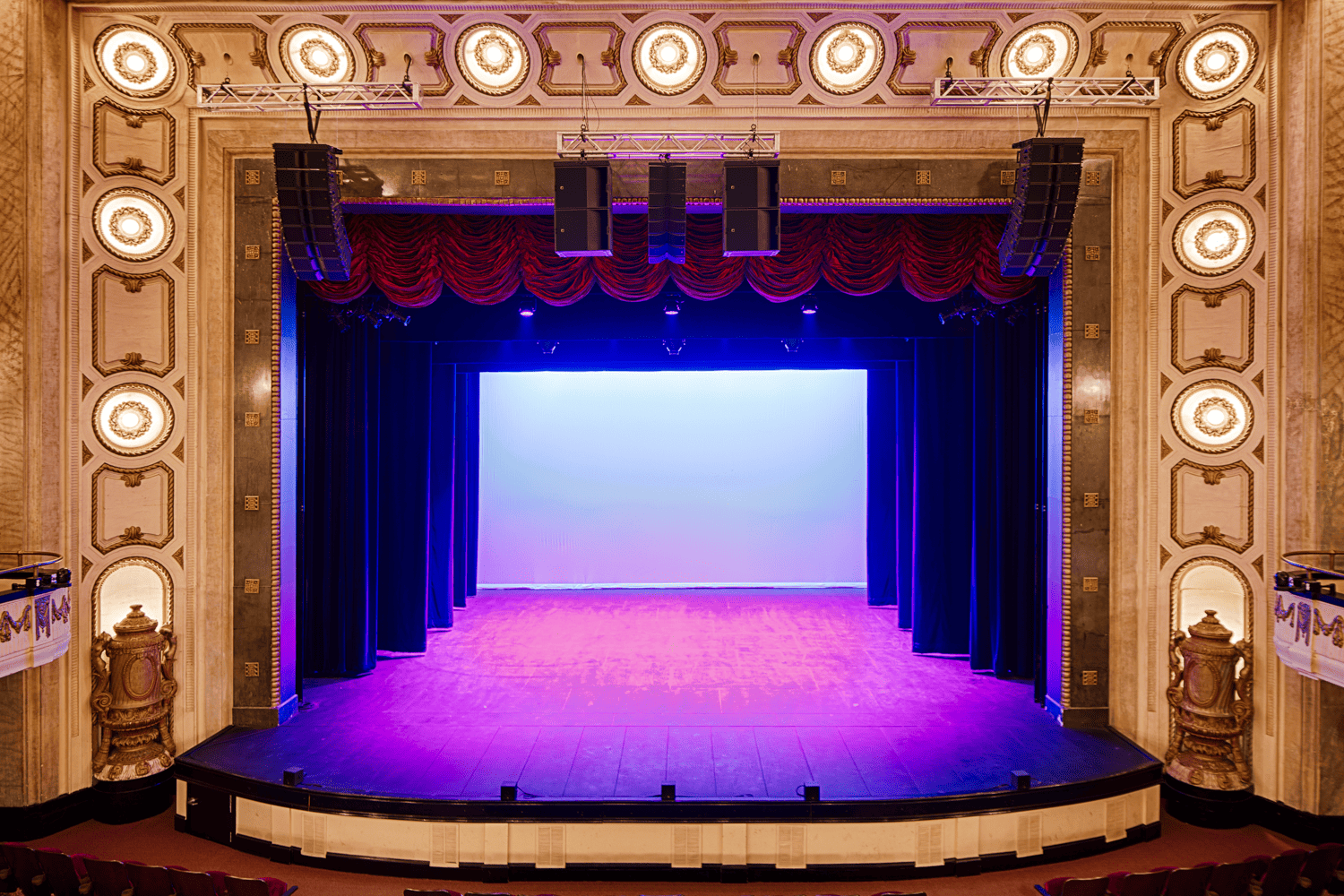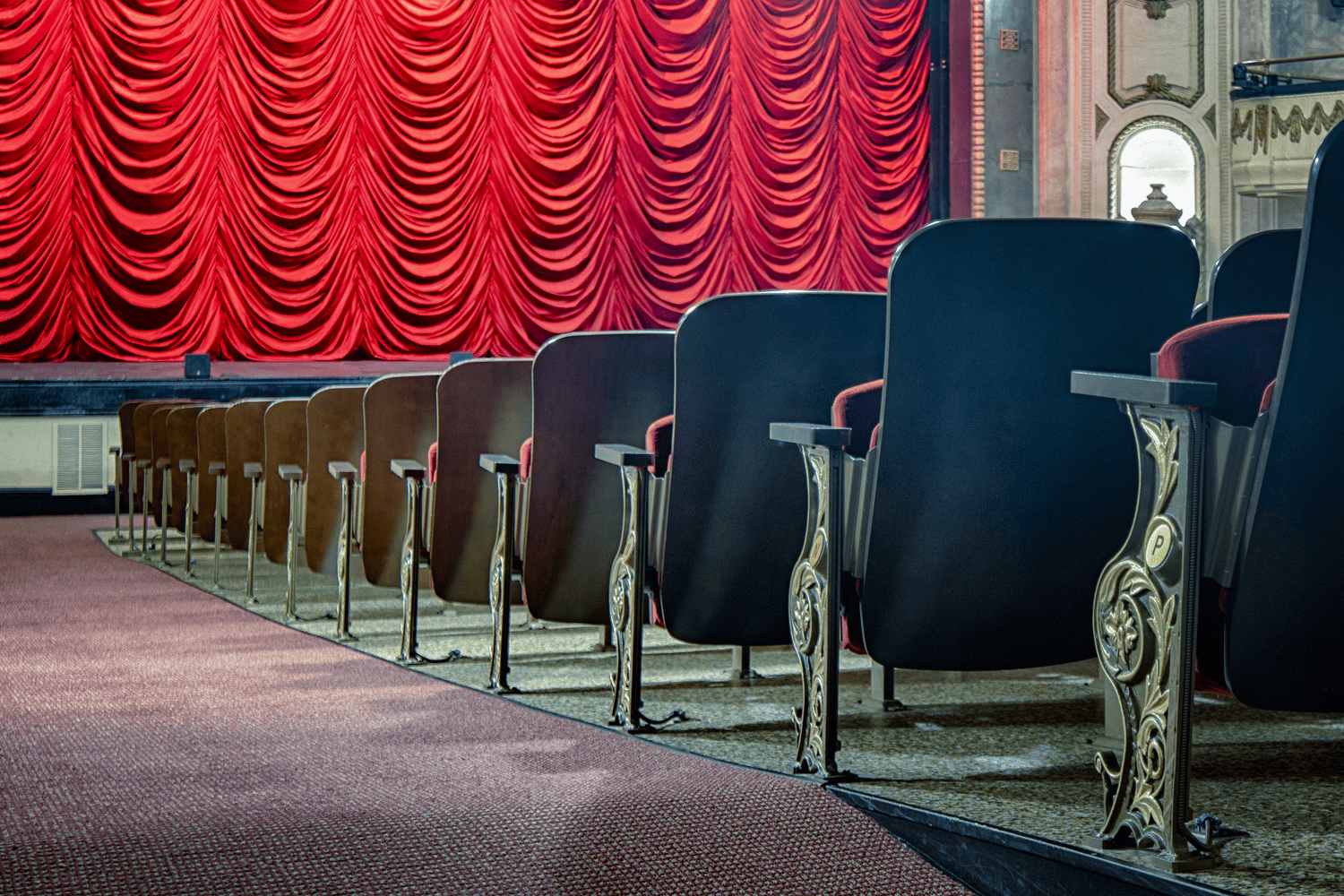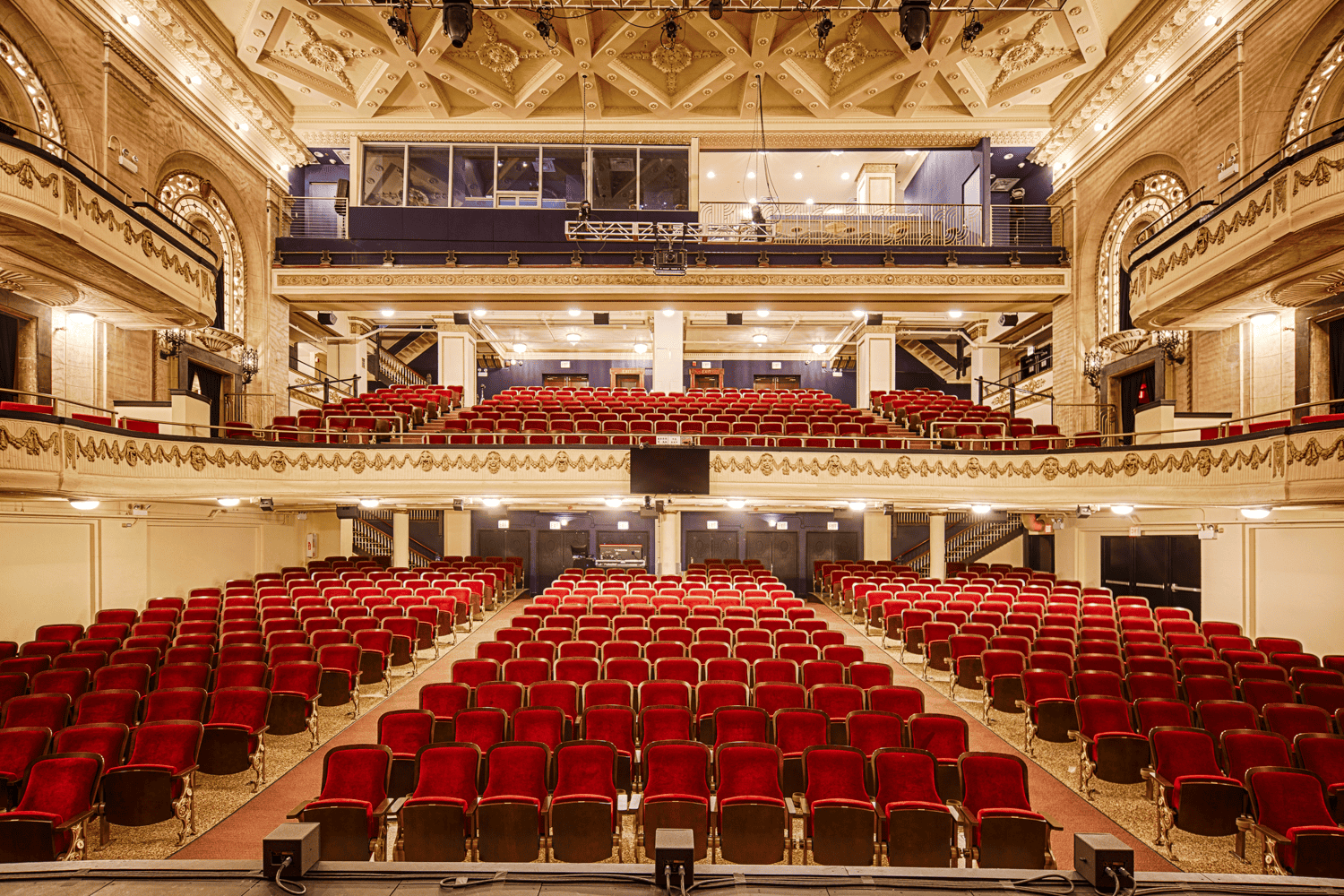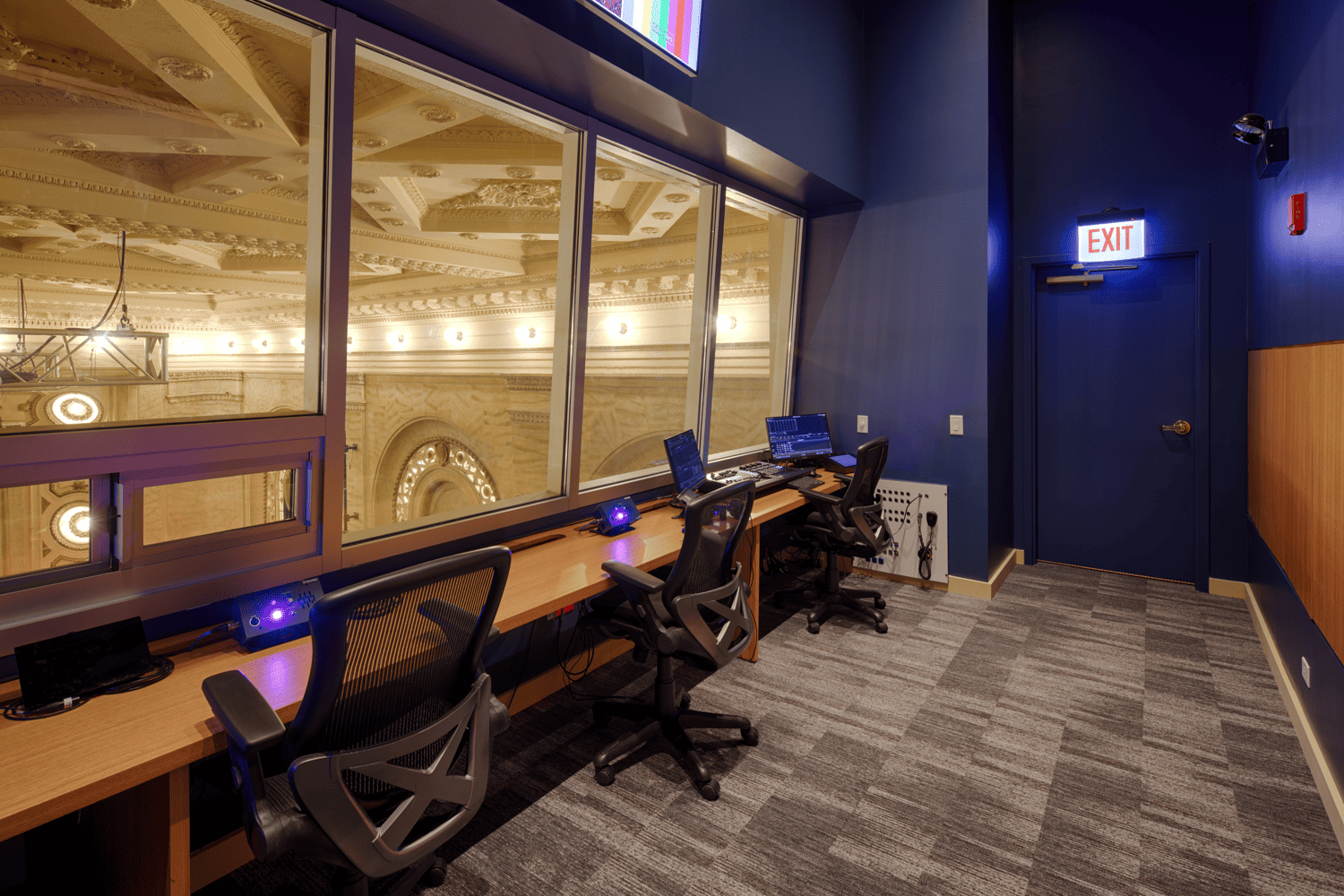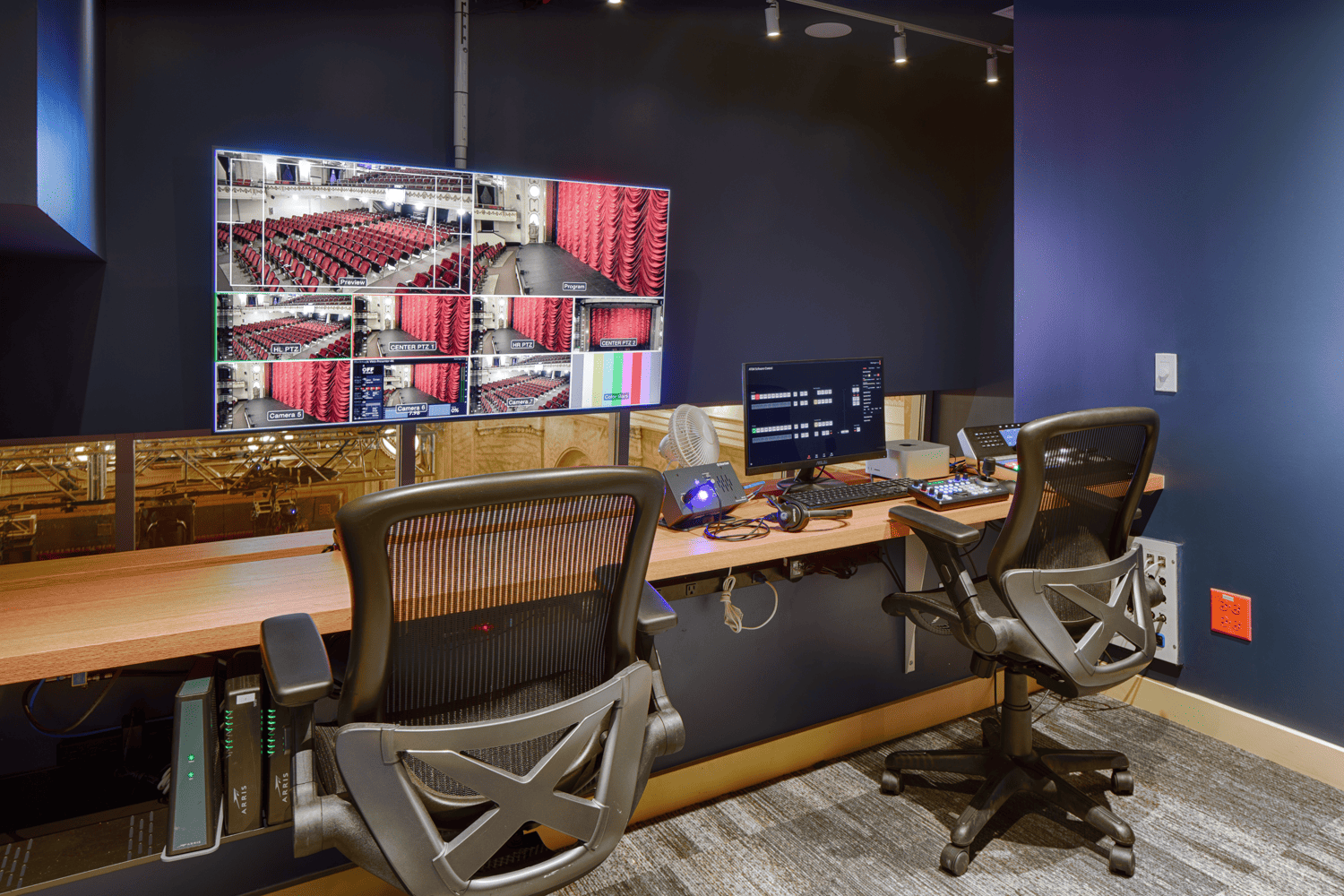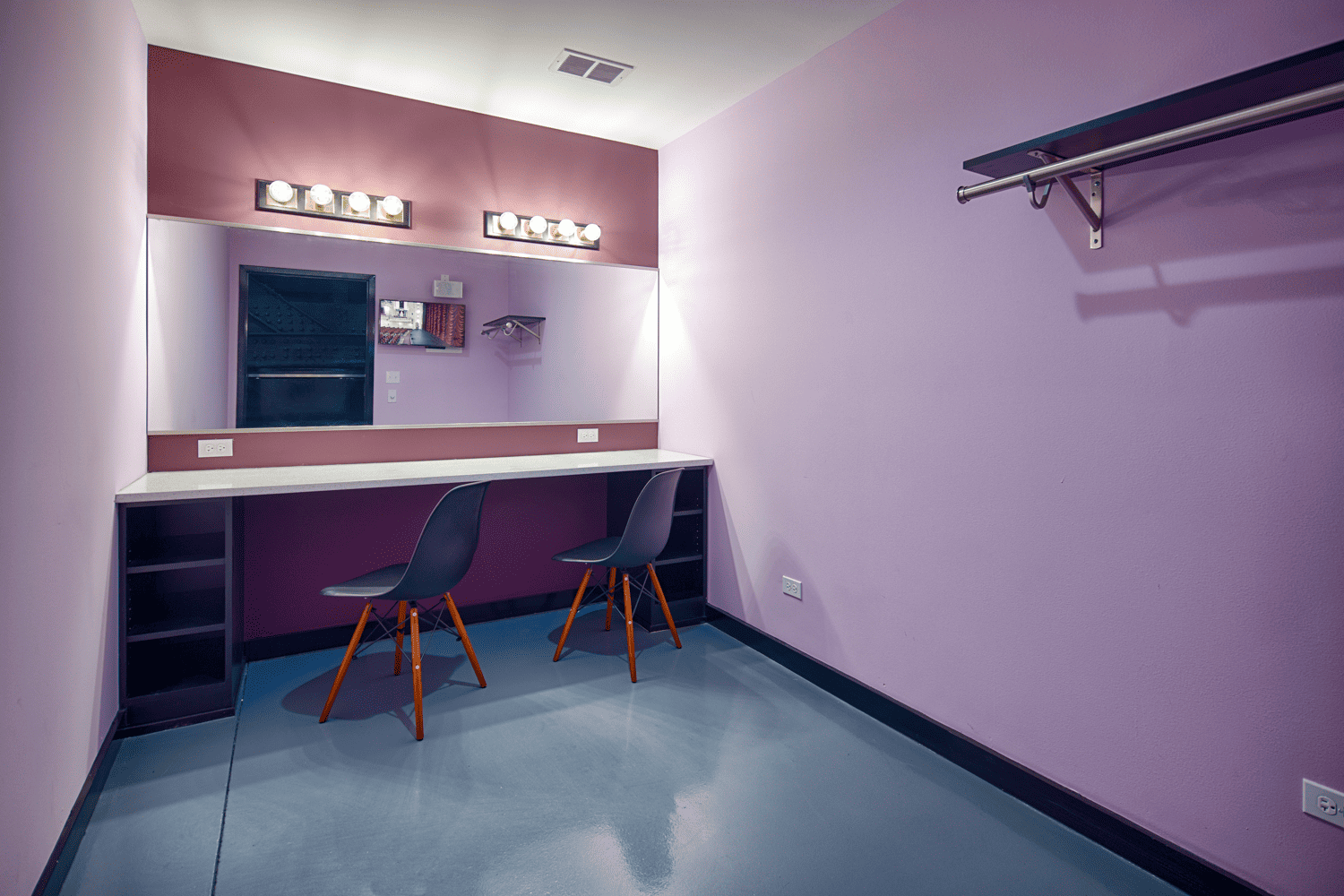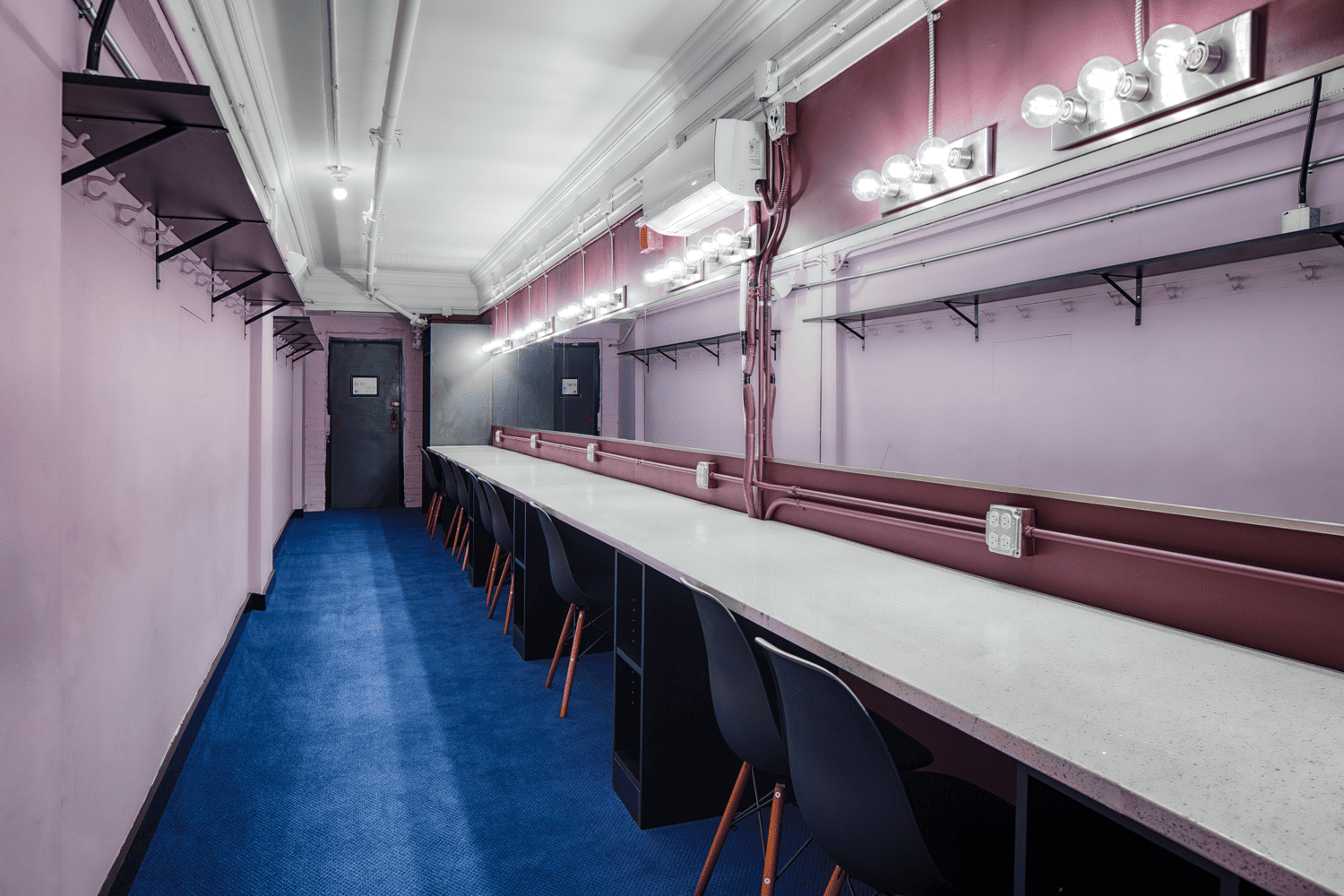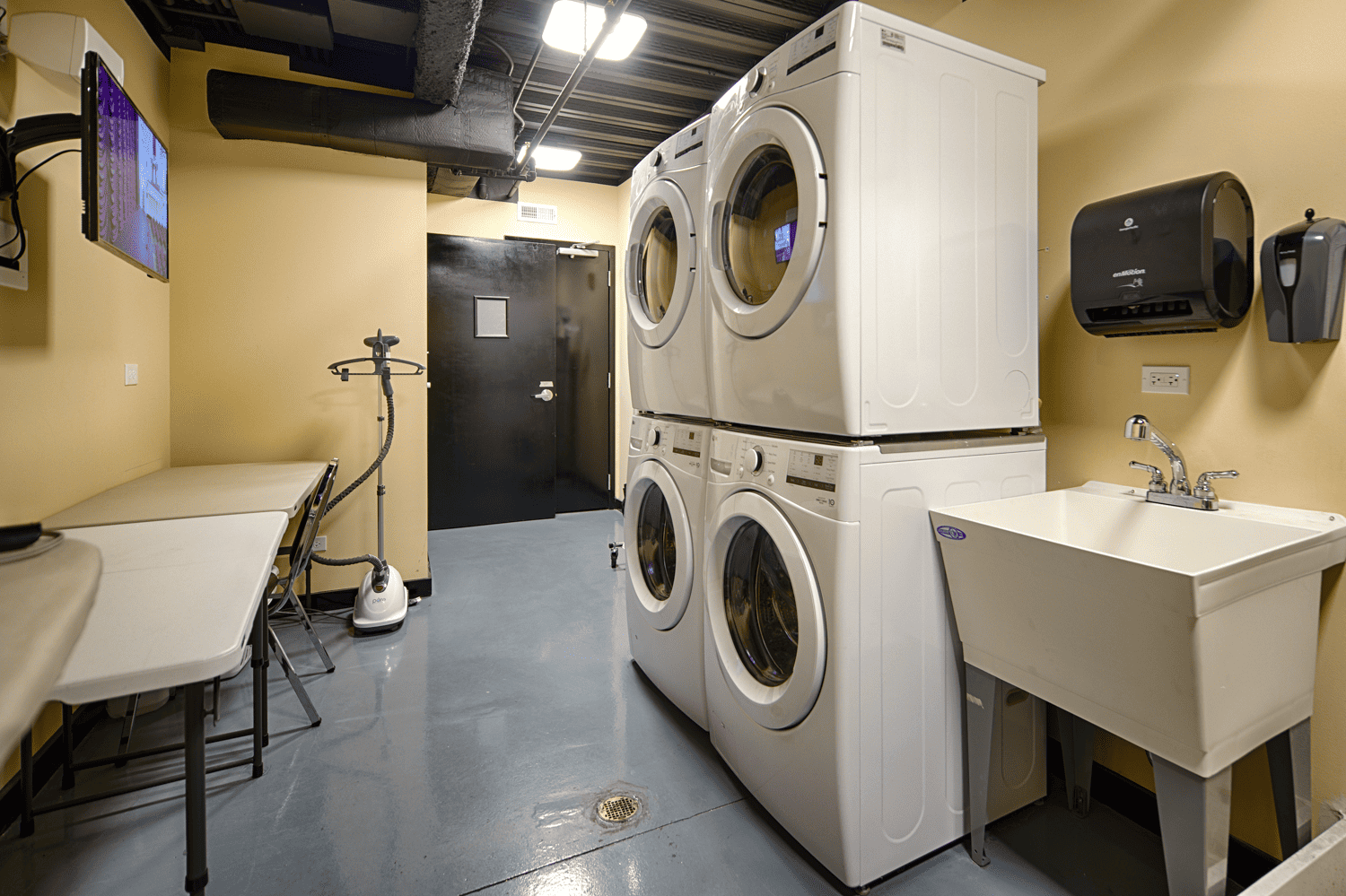A jewel of Chicago theater since 1898, the Studebaker Theater first emerged as a music and opera hall, hosting a variety of acts and performers. Situated where the Studebaker Carriage Company once held its carriage showroom, the theater sat 1,550 people and featured classical music, opera, and vaudeville performances, as well as resident companies such as the Castle Square Opera Company. In 1910, the Studebaker hosted a sold-out two-week farewell engagement with the famed French actress Sarah Bernhardt.
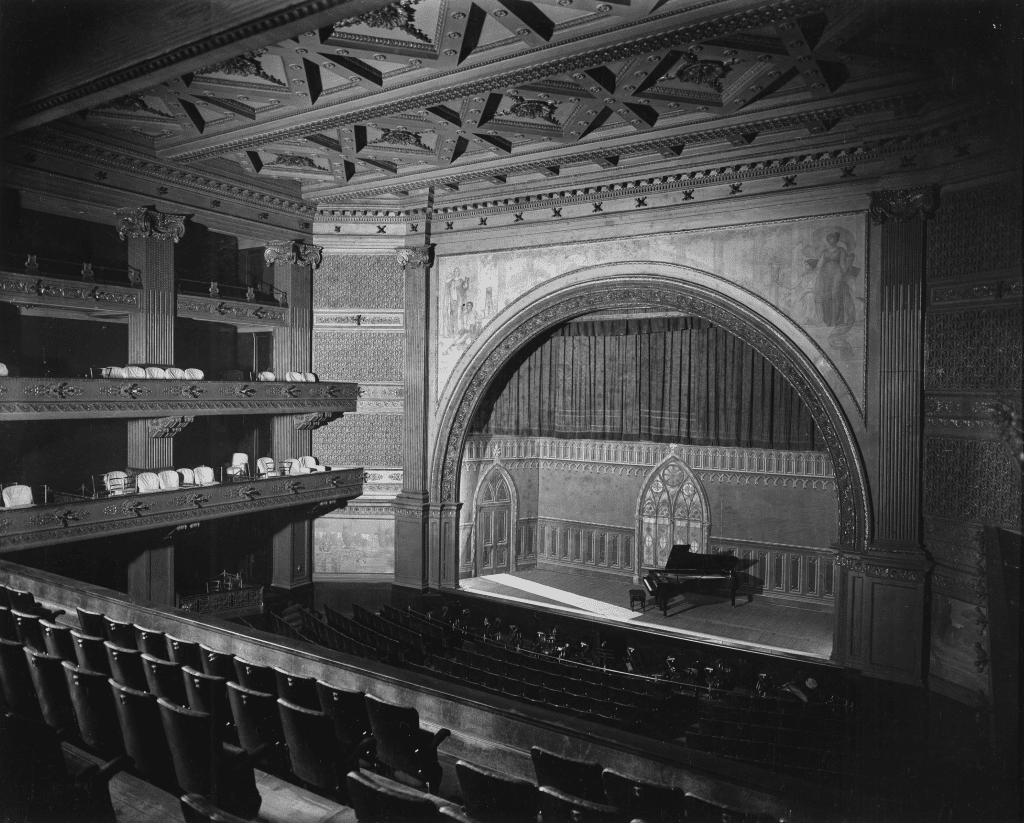
From the outset, the theater was noted as exceptionally beautiful and acoustically superior. It originally featured an arched proscenium until a major reconstruction in 1917, led by the Shubert Organization and designed by Andrew Rebori, enlarged the proscenium, rebuilt the side-walls, and constructed a new main floor, balcony, and gallery. The only piece that remained the same through the reconstruction was the original 1898 ceiling, which survives today.
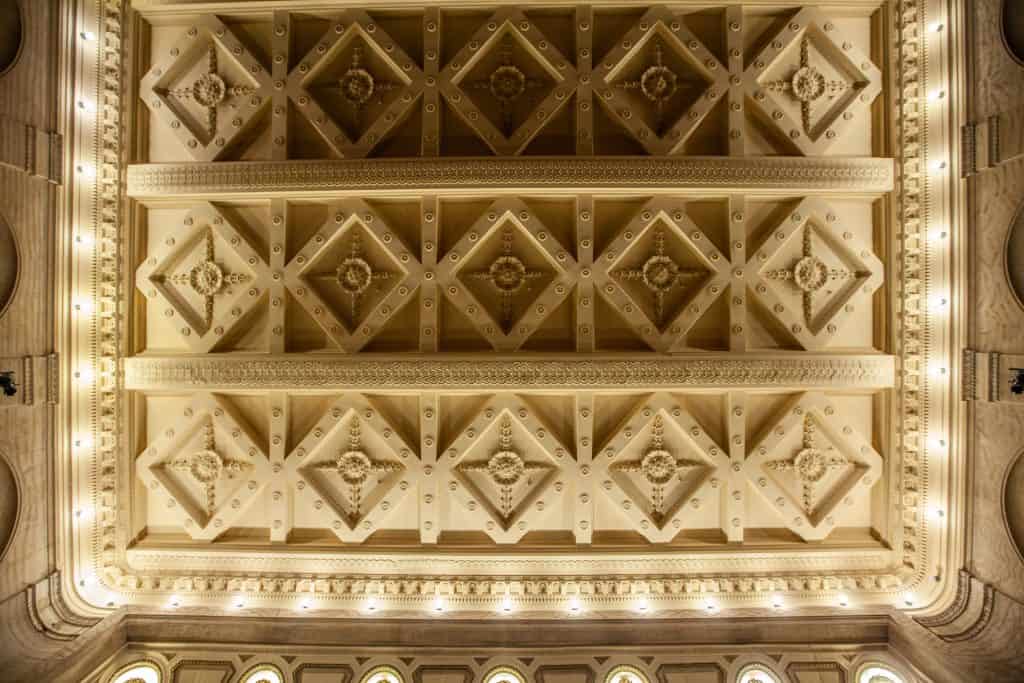 In 1926, Samuel Insull, a business magnate who helped found General Electric, took over the lease of the Studebaker and his wife Gladys Insull ran the theater as a stock company until it was disbanded in 1927.
In 1926, Samuel Insull, a business magnate who helped found General Electric, took over the lease of the Studebaker and his wife Gladys Insull ran the theater as a stock company until it was disbanded in 1927.
Following the stock market crash in 1929, the Studebaker began leasing to a variety of itinerant groups and touring productions. Some notable productions from this time included James Kirkwood and Mercedes Gilbert in “Mulatto” by Langston Hughes in 1936; Ethel Barrymore in “The Corn is Green” in 1943; Mae West in “Catherine the Great” in 1945; and Yul Brynner in “Lute Song” in 1947. Beginning in 1944, the Central Church hosted Sunday services in the Studebaker.
From 1950-1955, the theater was used as studios for NBC. In 1956, The Studebaker Theatre Company was founded by Bernard Sahlins. Sahlins’ goal was to create a permanent repertory company in the Studebaker, presenting classic and contemporary plays with Chicago talent. Some of the company’s productions included Geraldine Page in “The Immoralist” by Andre Gide; “A View from the Bridge” by Arthur Miller; and Harvey Korman in “Waiting for Godot” by Samuel Beckett. Due to financial difficulties, in 1957 the company shuttered, however less than two years later Sahlins would go on to help found The Second City.
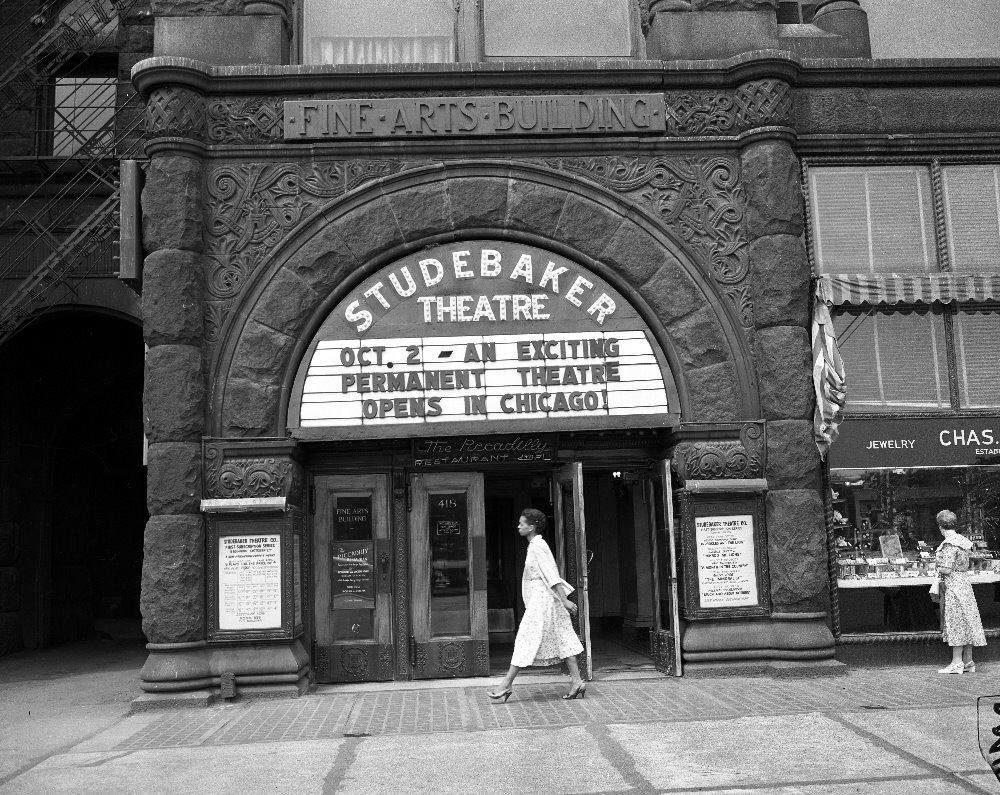
From 1957 to 1982, the Studebaker went on to operate under a series of organizations including the Nederlanders. The theater featured touring productions during this time, with prominent stars. Some notable productions from these years included Eartha Kitt in “The Owl and The Pussycat” by Bill Manhoff in 1964; Martin Sheen in “The Subject Was Roses” by Frank D. Gilroy in 1966; Henry Fonda in “Time of Your Life” by William Saroyan in 1973; Peter O’Toole in “Present Laughter” by Noel Coward in 1978; and Rex Harrison and Claudette Colbert in “The Kingfisher” by William Douglas Home in 1979.
In December 1982, M&R Amusement Company converted the Studebaker and the Fine Arts Building’s smaller World Playhouse theater into a multiplex. At first the new multiplex mainly showed art and independent films, but when M&R sold their theater chain to Loews in 1988, it switched to playing mostly Hollywood films. Films shown at the multiplex included the Talking Heads’ “Stop Making Sense,” as well as “Paris, Texas,” “Blue Velvet,” “Metropolis,” “Repo Man,” “Moonlighting,” “True Stories, “Crimes and Misdemeanors,” and many more.
M&R closed the complex in November 2000, and the Studebaker went on to sit empty and in disrepair for about 15 years.
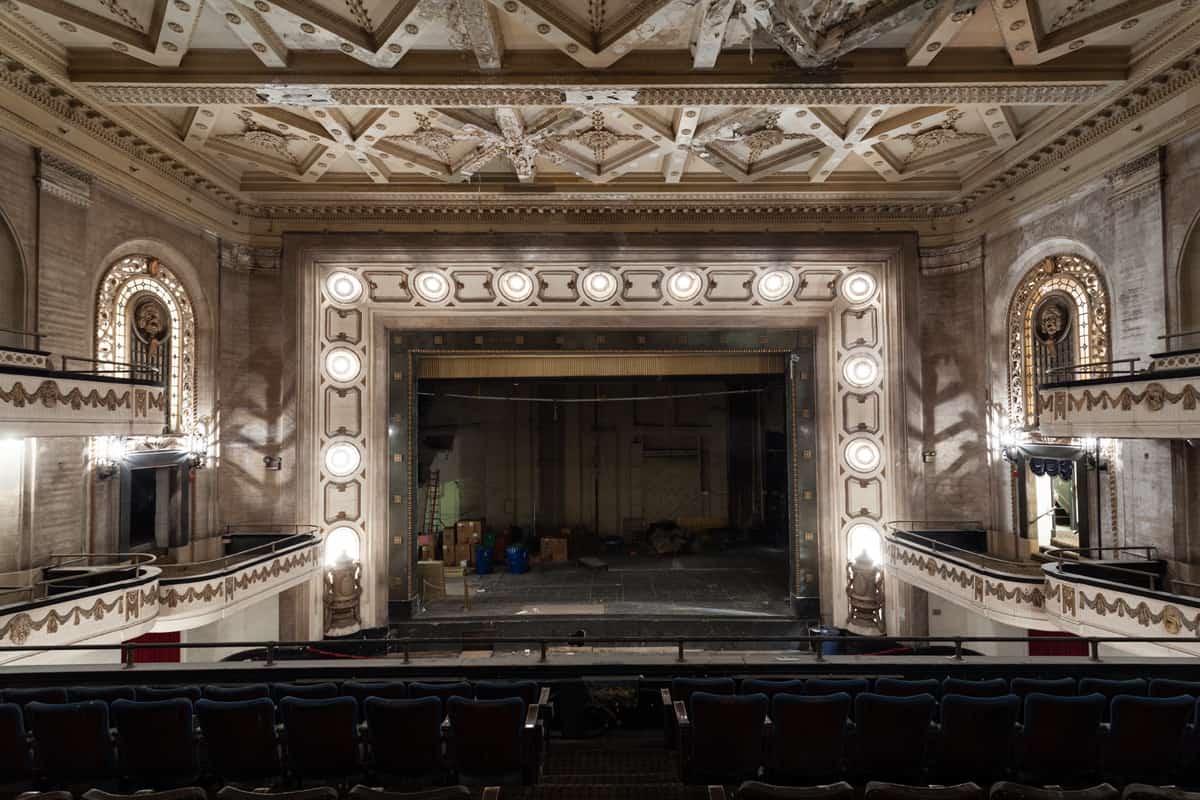 In 2014, work began to restore the Studebaker theater, and it reopened for occasional live performances in 2015. In 2021, a major multi-million dollar renovation began, bringing all-new seating, a two-level production booth, state-of-the-art lighting and sound systems, and more to the Studebaker. The renovation was formally completed in 2022. Since its grand reopening in 2022, the Studebaker has been home to NPR’s “Wait Wait… Don’t Tell Me!”, and has featured performances from the Chicago International Puppet Theater Festival, the Chicago Opera Theater, the Chicago Academy for the Arts, the Chicago Jazz Orchestra, as well as new musicals and more.
In 2014, work began to restore the Studebaker theater, and it reopened for occasional live performances in 2015. In 2021, a major multi-million dollar renovation began, bringing all-new seating, a two-level production booth, state-of-the-art lighting and sound systems, and more to the Studebaker. The renovation was formally completed in 2022. Since its grand reopening in 2022, the Studebaker has been home to NPR’s “Wait Wait… Don’t Tell Me!”, and has featured performances from the Chicago International Puppet Theater Festival, the Chicago Opera Theater, the Chicago Academy for the Arts, the Chicago Jazz Orchestra, as well as new musicals and more.
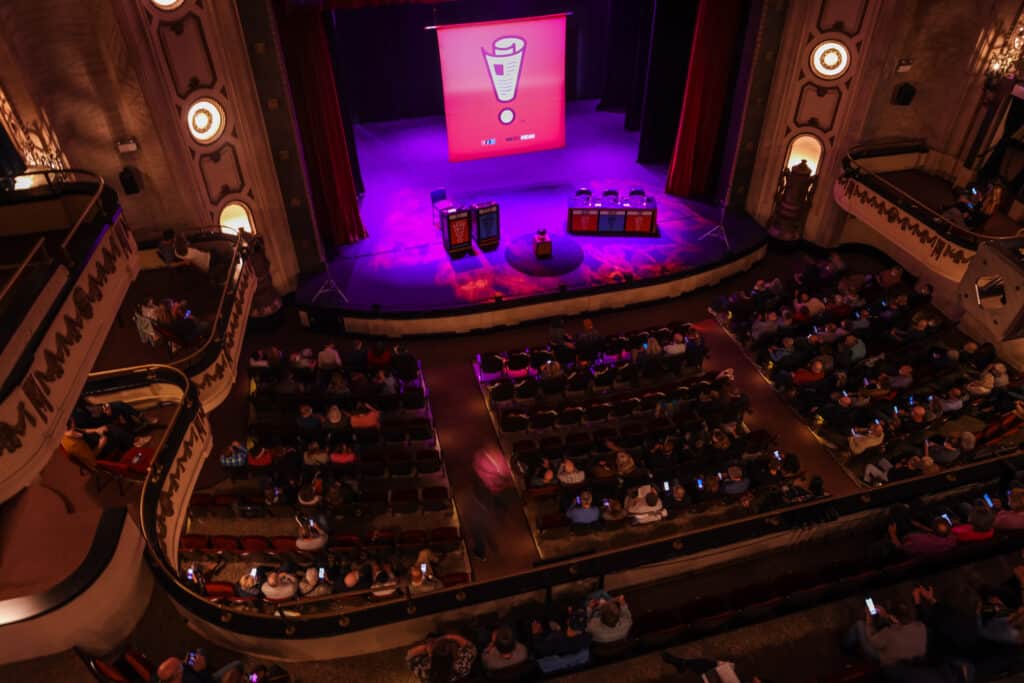 We are proud to be revitalizing the historic Studebaker, honoring the history of the space while advancing its technological capacity for contemporary multidisciplinary performance and bringing this one of a kind theater into its next chapter.
We are proud to be revitalizing the historic Studebaker, honoring the history of the space while advancing its technological capacity for contemporary multidisciplinary performance and bringing this one of a kind theater into its next chapter.








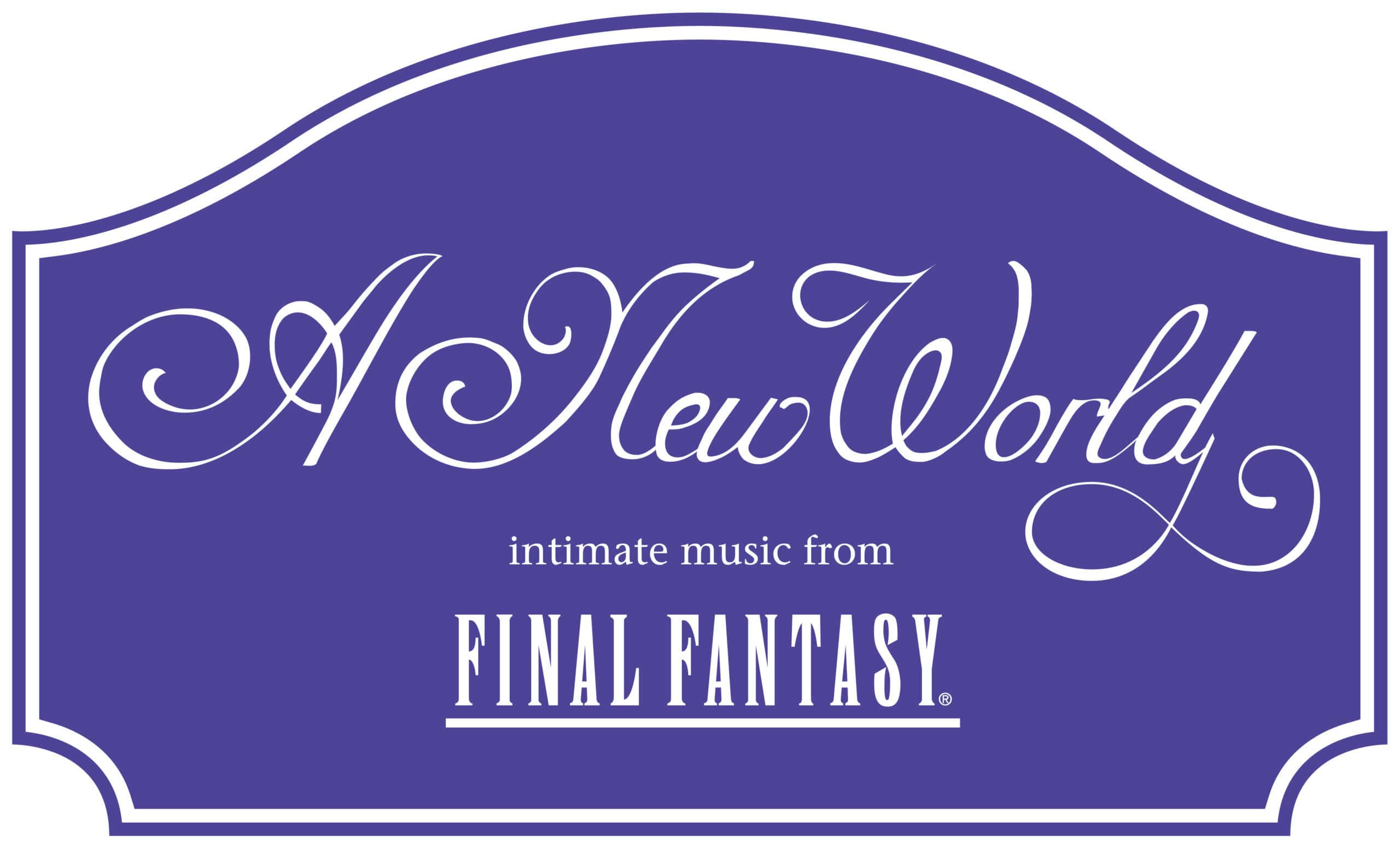

 In 1926, Samuel Insull, a business magnate who helped found General Electric, took over the lease of the Studebaker and his wife Gladys Insull ran the theater as a stock company until it was disbanded in 1927.
In 1926, Samuel Insull, a business magnate who helped found General Electric, took over the lease of the Studebaker and his wife Gladys Insull ran the theater as a stock company until it was disbanded in 1927.
 In 2014, work began to restore the Studebaker theater, and it reopened for occasional live performances in 2015. In 2021, a major multi-million dollar renovation began, bringing all-new seating, a two-level production booth, state-of-the-art lighting and sound systems, and more to the Studebaker. The renovation was formally completed in 2022. Since its grand reopening in 2022, the Studebaker has been home to NPR’s “Wait Wait… Don’t Tell Me!”, and has featured performances from the Chicago International Puppet Theater Festival, the Chicago Opera Theater, the Chicago Academy for the Arts, the Chicago Jazz Orchestra, as well as new musicals and more.
In 2014, work began to restore the Studebaker theater, and it reopened for occasional live performances in 2015. In 2021, a major multi-million dollar renovation began, bringing all-new seating, a two-level production booth, state-of-the-art lighting and sound systems, and more to the Studebaker. The renovation was formally completed in 2022. Since its grand reopening in 2022, the Studebaker has been home to NPR’s “Wait Wait… Don’t Tell Me!”, and has featured performances from the Chicago International Puppet Theater Festival, the Chicago Opera Theater, the Chicago Academy for the Arts, the Chicago Jazz Orchestra, as well as new musicals and more. We are proud to be revitalizing the historic Studebaker, honoring the history of the space while advancing its technological capacity for contemporary multidisciplinary performance and bringing this one of a kind theater into its next chapter.
We are proud to be revitalizing the historic Studebaker, honoring the history of the space while advancing its technological capacity for contemporary multidisciplinary performance and bringing this one of a kind theater into its next chapter.